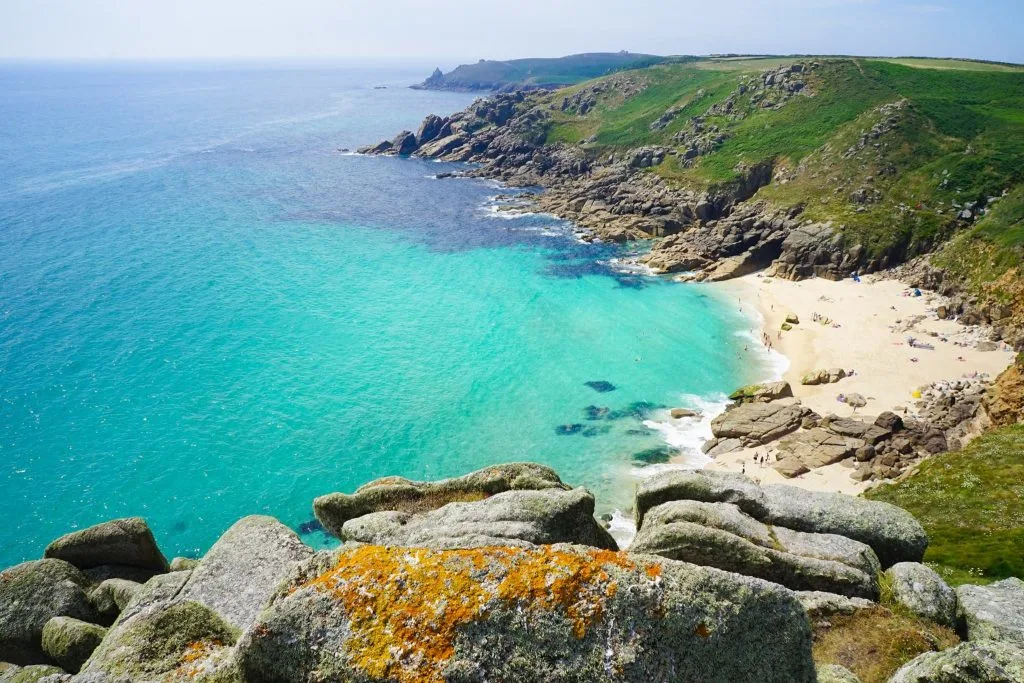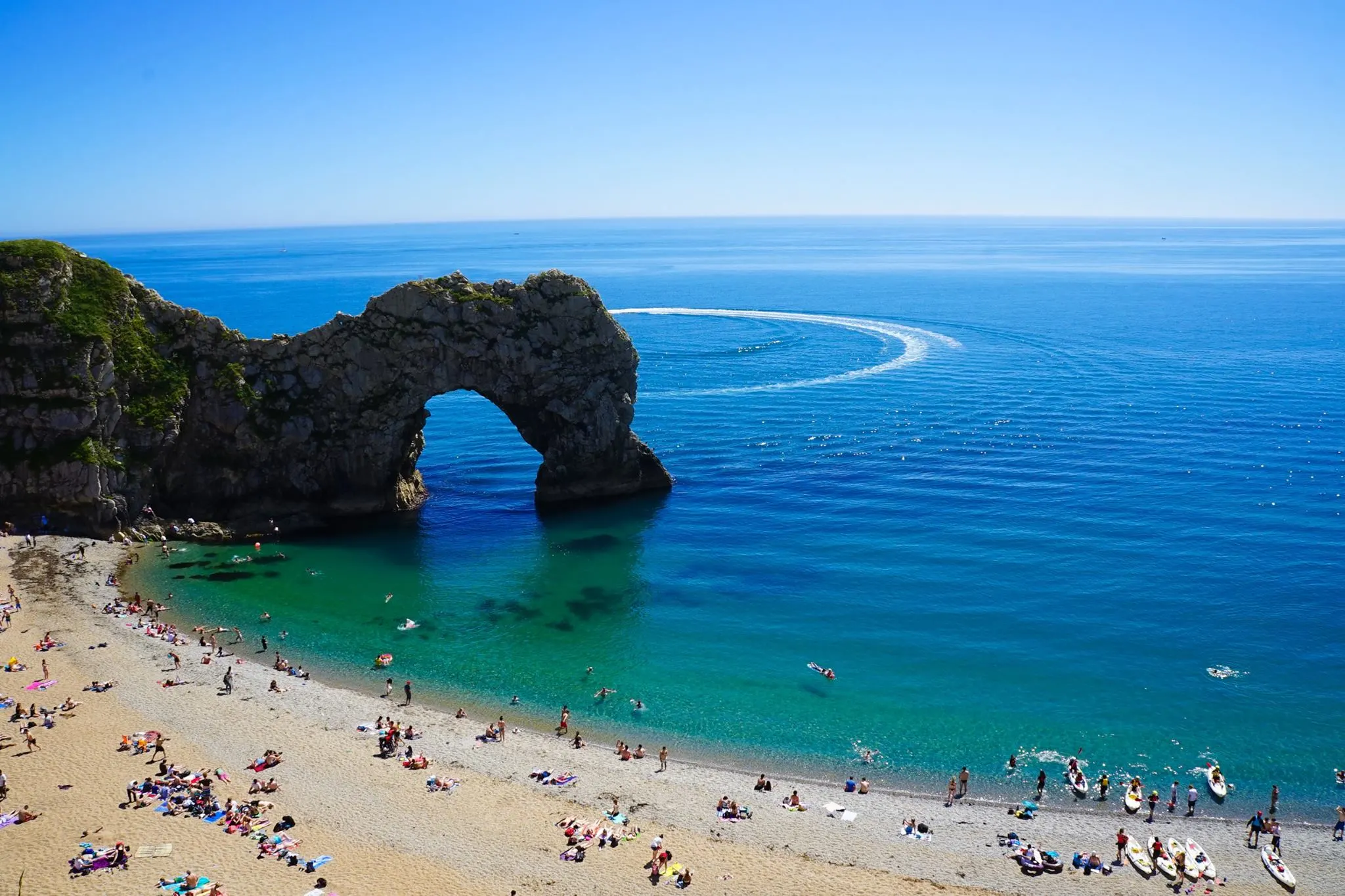Expert travel storyteller Jordan Adkins, founder of InspiredByMaps.com, brings a decade of adventures across 101 countries and 450+ UNESCO sites into rich, off-the-beaten-path narratives, melding ecological expertise with genuine, seasoned travel insights. His full bio can be found here.
The United Kingdom of Great Britain and Northern Ireland is well known for its extraordinary cultural heritage, nostalgic sceneries, and iconic urban landmarks. Fittingly, the United Kingdom is also home to 32 of the more than 1,000 World Heritage Sites worldwide, as inscribed by the United Nations Educational, Scientific, and Cultural Organization (UNESCO).
United Kingdom’s enchanting UNESCO sites include magnanimous cathedrals, extensive industrial landscapes, and geological wonders. These sites range from the iconic Westminster Abbey and the spectacular Forth Bride to the far-flung frontiers of the Roman Empire to the (aptly named) Inaccessible Island.
The theme of culture is prevalent throughout these 32 sites. However, there are also critical natural and mixed sites that reflect the United Kingdom’s remarkable natural heritage. Some of these sites are landmarks of the United Kingdom, but a few are rather obscure and likely only known to the most persistent of travelers.
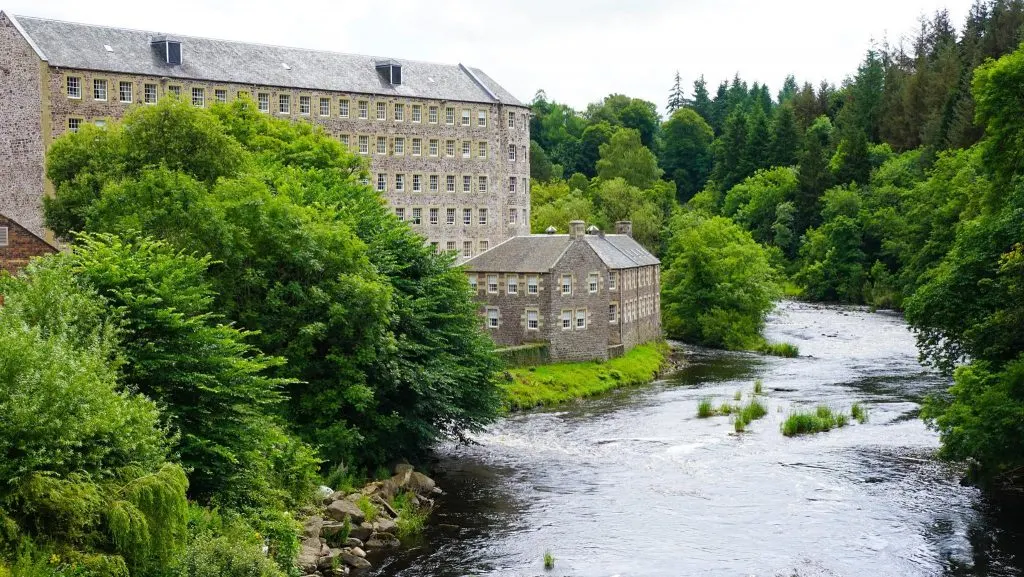
UNESCO is a bureau of the United Nations that endeavors to support the protection and growth of the world’s intellectual and cultural property. It does this by electing UNESCO sites based on their “outstanding universal value” merit in the arenas of science, history, or culture. As a result, UNESCO Sites are meaningful to the mutual interests of humanity – and legally guarded by international treaties.
Travel influenced by UNESCO sites allows visitors to explore esoteric spots, aid preservation, obtain specific knowledge about the history of Earth and humanity – and to wonder at unequivocally majestic sites. While a few such as the Drottningholm Palace in Stockholm and the majestic Taj Mahal in India are famous around the world, there are far more untouristy UNESCO sites worthy of insertion in any ‘off-the-beaten-track’ bucket list.
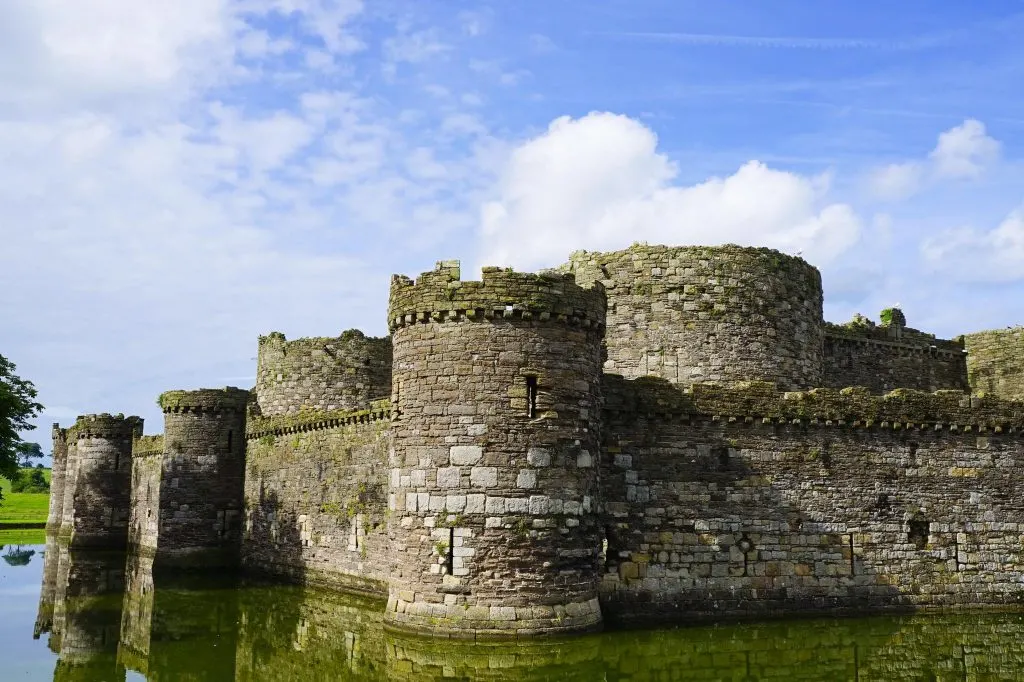
Inscriptions settle into two categories: cultural and natural locations, or a combination of both (mixed). There are currently 32 UNESCO world heritage sites in the United Kingdom, 27 cultural ones, four natural ones, and one mixed. While I have visited most of them myself, I have included all sites here – so you can get an idea of what makes each special.
So, why not immerse yourself in one or more of these sites on your next United Kingdom vacation? From astonishing, natural wonders to unprecedented feats of human engineering, check out our exhaustive list of UK UNESCO sites to determine which places resonate with you. You can then use them as a roadmap for the trip of a lifetime.

Page Contents
- Cultural UNESCO World Heritage Sites In United Kingdom
- Blaenavon Industrial Landscape
- Blenheim Palace
- Canterbury Cathedral, St Augustine’s Abbey, and St Martin’s Church
- Castles and Town Walls of King Edward in Gwynedd
- City of Bath
- Cornwall and West Devon Mining Landscape
- Derwent Valley Mills
- Durham Castle and Cathedral
- Frontiers of the Roman Empire
- Gorham’s Cave Complex
- Heart of Neolithic Orkney
- Historic Town of St George and Related Fortifications, Bermuda
- Ironbridge Gorge
- Jodrell Bank Observatory
- Liverpool – Maritime Mercantile City
- Maritime Greenwich
- New Lanark
- Old and New Towns of Edinburgh
- Palace of Westminster and Westminster Abbey including Saint Margaret’s Church
- Pontcysyllte Aqueduct and Canal
- Royal Botanic Gardens, Kew
- Saltaire
- Stonehenge, Avebury, and Associated Sites
- Studley Royal Park including the Ruins of Fountains Abbey
- The English Lake District
- The Forth Bridge
- Tower of London
- Natural UNESCO World Heritage Sites In United Kingdom
- Mixed UNESCO World Heritage Sites In United Kingdom
Cultural UNESCO World Heritage Sites In United Kingdom
The area, including and surrounding industrial Blaenavon, is a UNESCO World Heritage Site and confirms the supremacy of South Wales as the world’s principal producer of iron and coal in the 19th century.
The essential elements of the site all date from this time and can still be observed; quarries, coal and ore mines, workers’ homes, a rudimentary railway system, furnaces, and the cultural infrastructure of their community. Together they contribute exceptional testimony to the international importance in iron making and coal mining at the time. Besides, they give visitors a meaningful understanding of the evolution of these industries and the broader Industrial Revolution.
There are a great many places to explore in the area, and through public transport can be used – a private car is more straightforward. Some essential sites to visit including the remains of the late 18th century furnaces at the Blaenavon Ironworks, or “The Big Pit,” the last deep coal mine to operate in the Blaenavon area. The Big Pit is the most interesting as most of its surface buildings are still in site, including the winding gear, and remain as they were when coal production halted here in 1980.
There is even an underground guided tour offered here for free. What might seem like a rather uninteresting world heritage site in Wales is actually one of the most interactive and fascinating? For those who have further interest, the town of Blaenavon is also worth exploring as the best-conserved iron town of its period in the United Kingdom. Note the workers terraced housing, the St. Peter’s Church, and the Blaenavon Workmen’s Hall. If you have time, stop by St. Peter’s School, which has been refurbished and now serves as the United Kingdom’s first dedicated World Heritage Interpretation Centre.
The Blaenavon Industrial Landscape is not only one of the most underrated tourist attractions in the UK, but an essential stop to understand the full social, economic and technological processes that played out as a result of industrialization and iron/coal production.
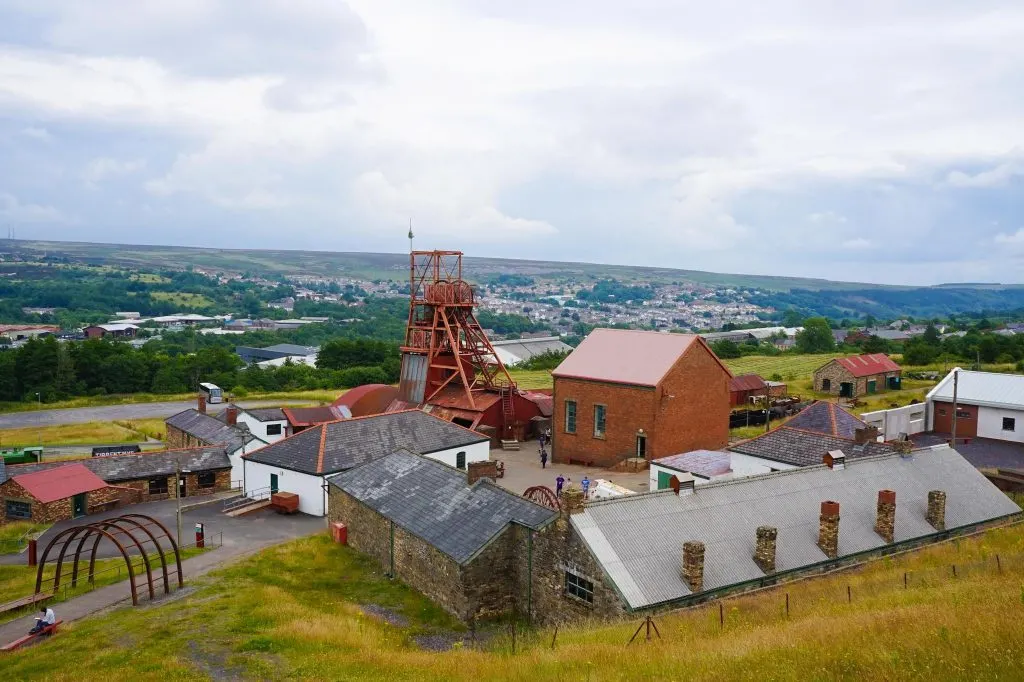
Blenheim Palace
This incredible historic house set in 2,000 acres of scenic grounds is a popular tourist attraction in the village of Woodstock on the edge of the Cotswolds, a short drive from Oxford. Blenheim Palace is best accessed by car, but you can also arrive by public transport. If coming from London or another UK city, catch a train into Oxford Railway Station, then the seven gold bus destined for Woodstock. You’ll be dropped off at the entrance to Blenheim Palace in 35 minutes.
UNESCO recognizes Blenheim Palace for its refusal to adopt French classicism. The architecture is closely linked to the beginning of the English Romantic movement, especially due to its embracing of English nature. Blenheim Palace was built to honor John Churchill and is still currently home to the 1st Duke of Marlborough. While visiting, you can admire the well-preserved interior of the 18th-century mansion or spend the best part of the day strolling the grounds, taking a miniature train, and visiting the butterfly house. Live deer and plenty of other wildlife roam the scenic grounds of Blenheim.
Blenheim entry is £18.50 for the grounds £28.50, including entry to the palace. However, because some public footpaths cross the grounds, you can technically enter Blenheim Palace for free. This will only gain you access to the grounds rather than the house, though. The months of December and January are particularly good times to visit because you can follow the Christmas Lights at Blenheim Trail around the illuminated grounds.
Explored by Rose from Where Goes Rose
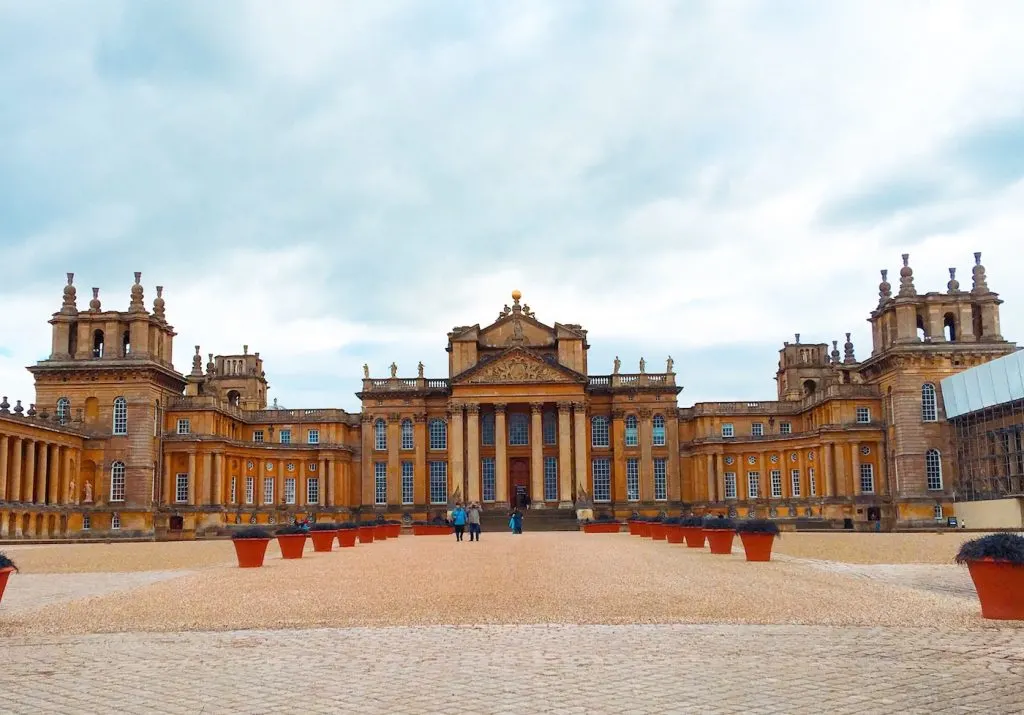
Canterbury Cathedral, St Augustine’s Abbey, and St Martin’s Church
Canterbury, in the South East England county of Kent, has retained the seat of the spiritual head of the Church of England for almost five centuries.
As a result of its auspicious history, the Canterbury UNESCO World Heritage site includes a range of notable monuments including the simple Church of St Martin (the oldest surviving church in England); the remains of the Abbey of St Augustine (that stand in remembrance of the saint’s evangelizing role in 597); and the majestic Christ Church Cathedral (a perfect fusion of Romanesque and Perpendicular Gothic, enhanced by a set of excellent early stained glass windows).
After the murder of Archbishop Thomas Becket in 1170 AD and his succeeding canonization, Christ Church Cathedral evolved into a place of pilgrimage. As a result, the site is undeviatingly and tangibly connected with the chronicle of the introduction of Christianity to the Anglo-Saxon kingdoms.
Today, it remains one of the most popular places to visit in the United Kingdom – either as part of a day trip from London or a larger UK road trip!
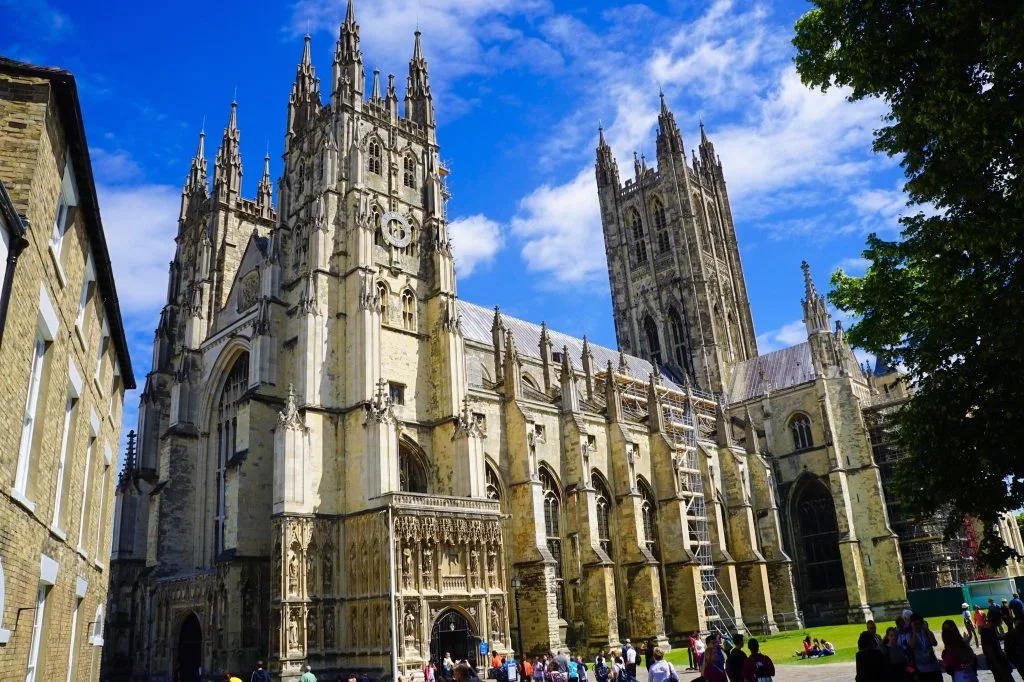
Castles and Town Walls of King Edward in Gwynedd
The four castles of Caernarfon, Harlech, Beaumaris, Conwy in North Wales (along with the companion fortified towns of Conwy and Caernarfon) are enlisted as UNESCO World Heritage Sites as exceptional instances of late 13th / early 14th-century military architecture in Europe. These examples are considered unusual due to their completeness and pristine preservation and also due to their collective diversity of medieval architectural form.
The castles, which are coherent stylistically, are exemplary medieval military constructs conceived by the most celebrated military architect of the time: James of St George (c. 1230-1309), King Edward I of England’s chief architect.
The comprehensive and accurate modern documentation of the castles, and the continuation of neighboring fortified towns at both Caernarfon and Conwy, advance the universal significance of the site and ensure they remain one of the best sources of medieval history today.
These are the archetypical castles of fairytales we are told as children, and everyone, young and old, can delight in exploring them. The beauty, the masonry, the seaside location, these castles are real gems and are worth a trip to Wales on their own. You could spend days exploring drawbridges, fortified gates, redoubts, dungeons, towers, and stone walls at each site – and you should. Just don’t also forget to make time to explore Snowdonia nearby.
If you plan on coming to the United Kingdom by boat from Ireland, as I did, these castles are even easier to visit!
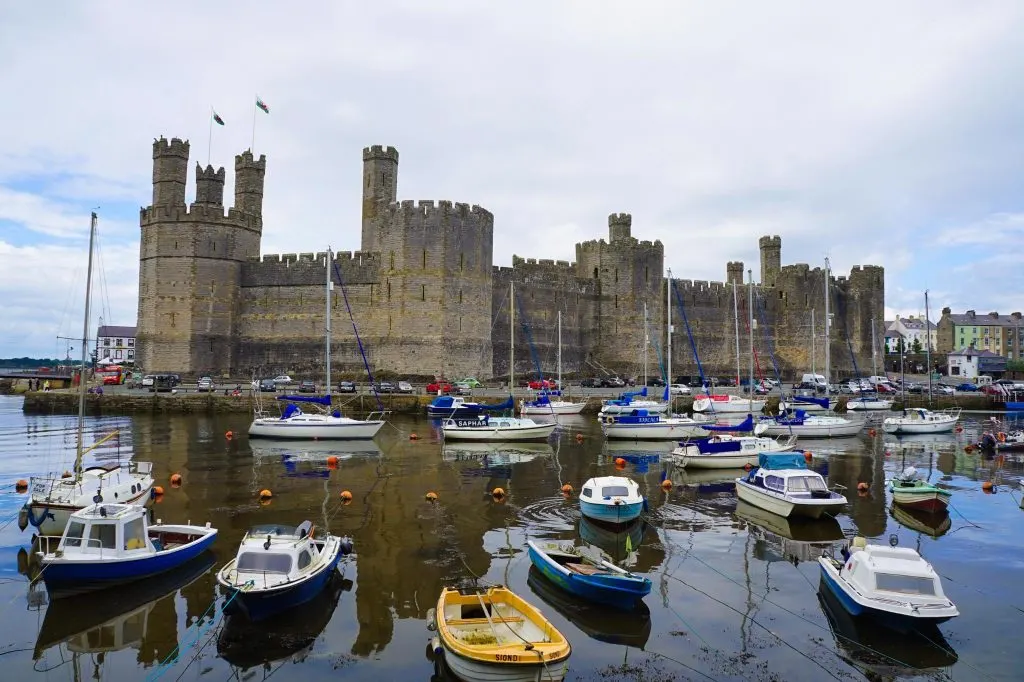
City of Bath
The famous honey-colored architecture which lines the elegant streets of Bath is enough to encourage anyone to visit. But look beyond the curving crescents, and there’s far more to discover – the combination of centuries of history and one of the most beautiful cities in the UK is what I love most.
The thermal springs have been tempting people to Bath for millennia, with the Roman baths providing the first reason for Bath’s place on UNESCO’s list of World Heritage Sites. You can still visit the historic Roman temple of Sulis Minerva, with the pools now in the heart of a museum, and try the healing waters (which mostly taste of eggs…)
Later the place to see and be seen during the Georgian era, art, and literature flourished while the social cream of the 18th century came to take the waters. Bath will be linked forever with Jane Austen, who captured this world in her novels, while the elegant designs of the city are another reason Unesco feels the city is so outstanding.
It’s not hard to imagine Bath as it would have been then, when the neoclassical Palladian buildings were new, including the Assembly Rooms and Royal Crescent. Less than 90 minutes from London on the train and only around 15 minutes from Bristol, it’s an easy day trip though it’s not hard to fill a longer break.
Museums galore introduce you to more of the history, many of which are very family-friendly if you’re visiting Bath with kids. It’s also relatively compact and easy to wander: don’t miss Bath Abbey, stroll across Pulteney Bridge with shops and cafes on the bridge itself overlooking the weir, then take the Bath Skyline tour on a bus around the city, or the three-mile Skyline walk for another view of golden Bath.
Explored by Cathy from MummyTravels
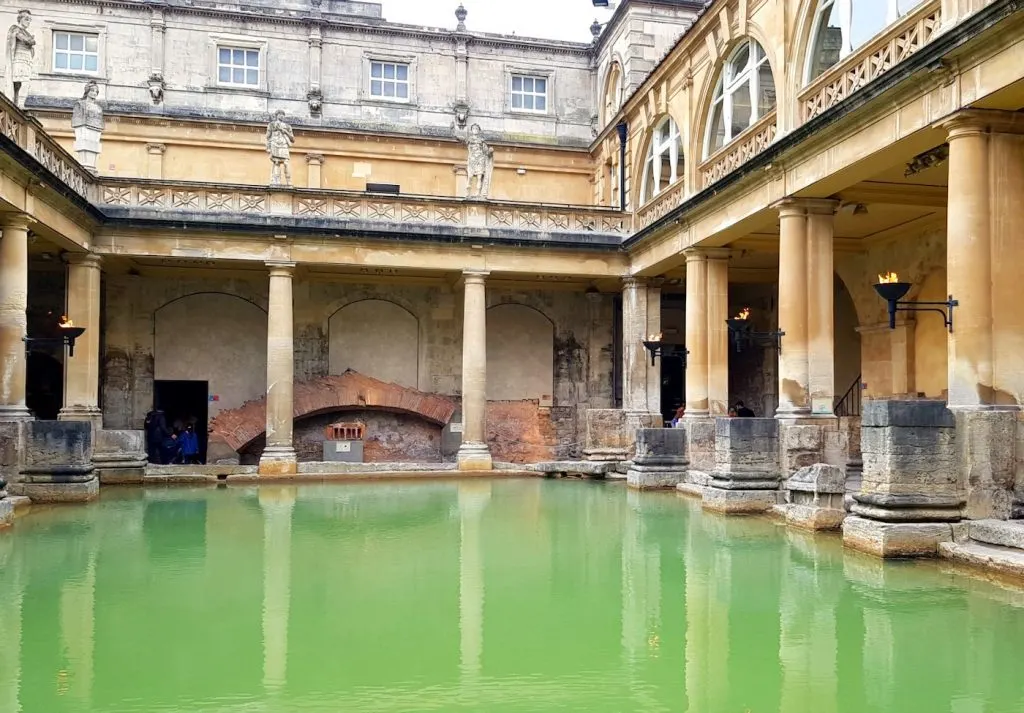
Cornwall and West Devon Mining Landscape
The Cornwall and West Devon Mining Landscape World Heritage site comprises elite mining landscapes in the southwest of England. UNESCO inscribed the site in 2006, but its uniqueness has been a source of pride for locals for far longer.
Much of the scenery of Cornwall and West Devon was remodeled in the 18th / early 19th centuries due to the speedy growth of first-generation copper and tin mining. Deep underground mines, engine houses, foundries sprung up around Cornwall and West Devon along with new towns, smallholdings, ports, and harbors. These sites – along with their secondary industries, collectively testify to the prolific innovation that was undertaken during this period in the early 19th century. How prolific? At its peak, the region was responsible for producing over two-thirds of the entire world’s copper supply!
The valuable remains of this now extinct industry are an attestation to the contribution Cornwall and West Devon brought to Britain’s Industrial Revolution and to the authority the area held on the world’s mining stage. At this time, Cornish technology (typified in engines, engine houses, and mining equipment) were transported around the globe. From this core, the mining technology driven by the latest developments in the steam engine was developed and trialed.
The great copper crash of the 1860s resulted in production mainly focused on the tin and slowly disappearing. However, mining did not end in Cornwall until 1998 with the closure of South Crofty Mine, which was the last tin mine to operate in Europe.
Today, the Cornwall and West Devon Mining Landscape site constitutes a range of individual but thematically linked locations. Some of the best to visit are the Crown Mines, the Geevor Tin Mine, and Wheal Coates in St Agnes – but all are wonderful to explore in their own way. Typically set in extreme natural environments, the mines are surprisingly beautiful, and many have related walks that allow you to explore the history, flora, and panoramic views nearby.

Derwent Valley Mills
The Cromford Mills in Derbyshire is part of the Derwent Valley Mills site series that were collectively recognized in 2001 as a UNESCO World Heritage Site. The entire site stretches from Masson Mills in Matlock Bath to the Derby Silk Mill 15 miles south. There are 17 designated sites in and around the communities of Cromford, Belford, Darley Abbey, and Milford.
Cromford Mills are located in the village of Cromford in the Derbyshire Peak District near the market town of Bakewell, Matlock Bath, and a few miles north of the city of Derby.
Cromford Mills belonged to Richard Arkwright, who introduced the factory system in his cotton mills in the 18th and 19th centuries. Arkwright’s invention of a water-powered spinning mill led to the development of this revolutionary system. Technological developments continued, and the systems introduced at Arkwright’s cotton mills were to influence production systems throughout the world.
Cromford Mills has recently undergone some restoration, and the Derwent Valley World Heritage Site Gateway is now located in one of the former mills. I highly recommend taking the ‘Arkwright Experience,” which is an audio-visual presentation given by Richard Arkwright himself! Also, take a guided tour of the Mill to learn more not only about the man behind the inventions but also about the lives of the ordinary people who toiled in his mills.
Explored by Tracy of Tracy’s Travels in Time
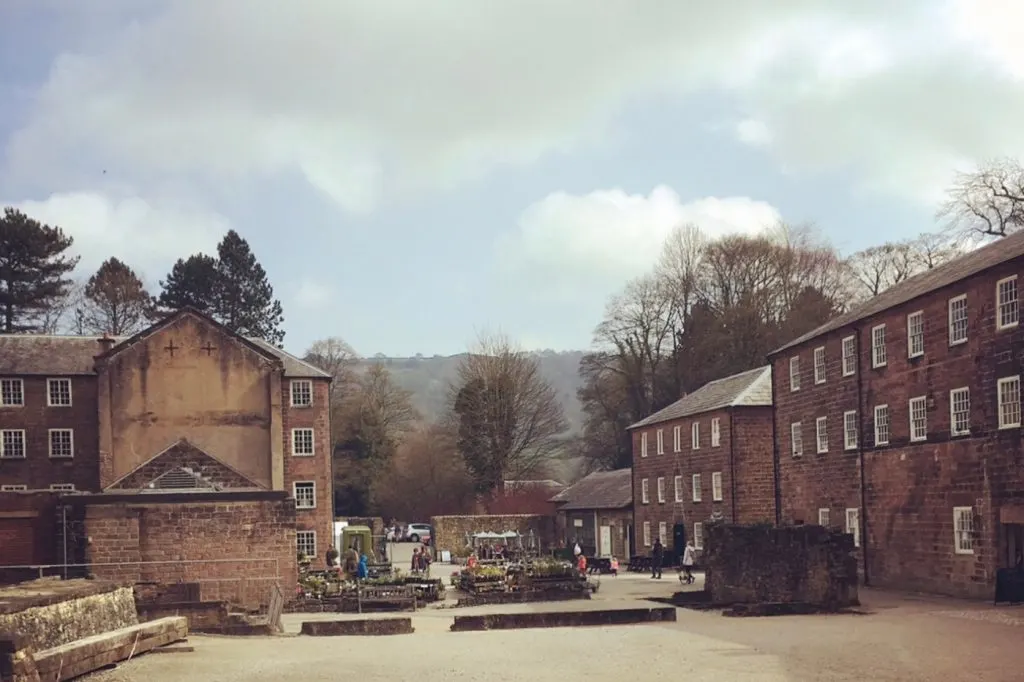
Durham Castle and Cathedral
The grand Durham Cathedral in the city of Durham was formed in the late 11th and early 12th century to house the remains of St. Cuthbert (634-687 AD) (the evangeliser of Northumbria) and the Venerable Bede (672/3-735 AD).
The listing of Durham Castle and Cathedral by UNESCO demonstrates that the early Benedictine monastic association that lived here recognized the site as the most substantial and most well-made model of Norman architecture in England. The groundbreaking audacity of the Cathedral in pushing for its vaulted ceiling portended Gothic architecture.
The Cathedral rests within the boundary of Durham Castle, which was constructed in the late eleventh century and was the stronghold and residence of the Prince-Bishops of Durham. The Price-Bishops were offered implicit autonomy at the time in exchange for defending the northern boundaries of England. Thus the site was an enduring site of both religious and secular power.
Within the precinct are numerous other succeeding buildings of the Durham Palatinate, displaying the Prince-Bishops’ civic duties and privileges. These incorporate the Bishop’s Court (now a library), almshouses, and schools. The Palace Green, a vast open space joining the many buildings of the site, was previously used as a site for processions and gatherings befitting the Prince Bishop’s status.
Positioned on a defensive peninsula created by a bend and steep banks of the River Wear, the site provided a safe base for the Benedictine monastic community of St. Cuthbert, who fled here after suffering under a centuries-long plague of Viking raids – and later for the Prince-Bishops of Durham as protectors of the rebellious English frontier.
Durham Castle and Cathedral is not only an exceptional and innovative architecture ensemble but also a tangible expression of romantic beauty and the spiritual and secular powers of the medieval Bishops’ Palatinate. The site has been consistently used for over 1000 years and is home to many relics, material culture, and religious traditions. Together, all these site factors manifest as a political declaration of Norman power imposed on a subjugate society and one of the country’s most compelling representations of Britain’s Norman Conquest.
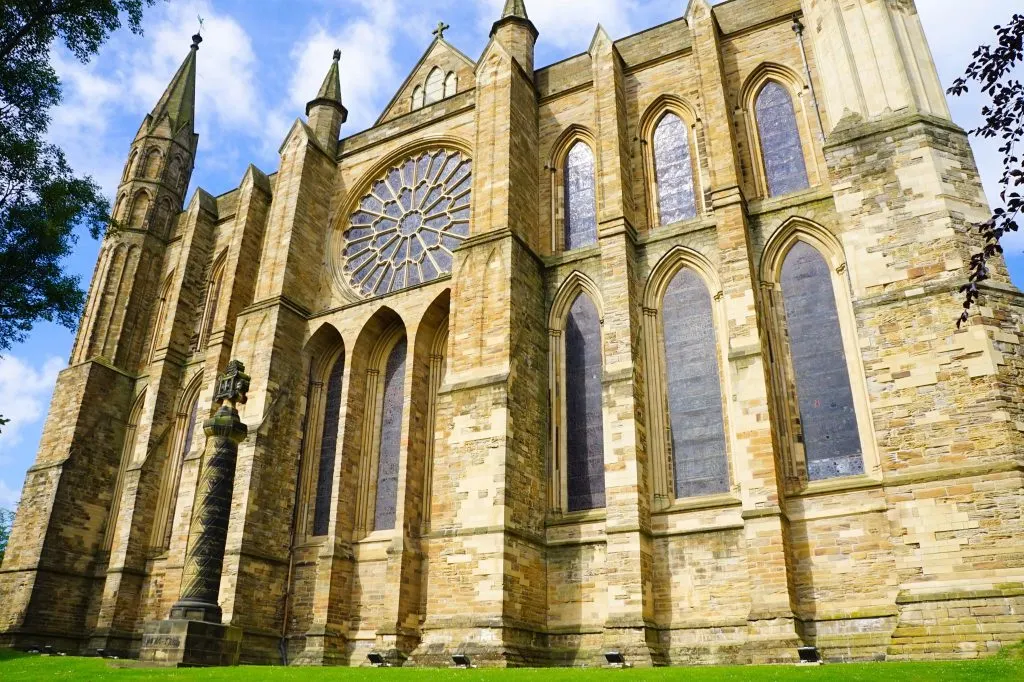
Frontiers of the Roman Empire
This is an extensive UNESCO World Heritage site that covered not only locations in the United Kingdom but also Germany. The Roman Empire was one of the most celebrated, largest, and successful empires humanity has ever. Encompassing the entirety of the Mediterranean world, the Roman Empire was defended by a system of frontiers.
These borders were extending from the Atlantic Coast on its western edge to the Black Sea in the east, and from central Scotland in the north to the northern peripheries of the Sahara Desert in the south. These frontiers were mostly assembled around 200 AD when the Roman Empire attained its greatest size.
This frontier manifested as both artificial and natural barriers, as defending spaces or entire military zones. As you might imagine, the remains of such an extensive border frontier almost 2,000 years are far-reaching, including noticeable and buried archaeology, either on behind or beyond the boundary.
The Frontiers of the Roman Empire is an attempt to recognize and protect this heritage. The property, which has been extended three times by UNESCO, currently includes three segments of the frontier: Hadrian’s Wall, the Upper German- Rhaetian Limes, and the Antonine Wall. All located in the northwestern part of the Empire, in modern-day German and the United Kingdom. If you are planning a road trip to the Scotland highlands or Skye, Antonine Wall’s wall is a fabulous addition to your itinerary.
Or further south Hadrian’s Walls has plenty of places where you can explore it – in various states of disrepair. Interestingly, Hadrian’s Wall is often considered to marks the borderland between England and Scotland, but in reality, Hadrian’s Wall rests entirely within England and has never reached the Anglo-Scottish border.
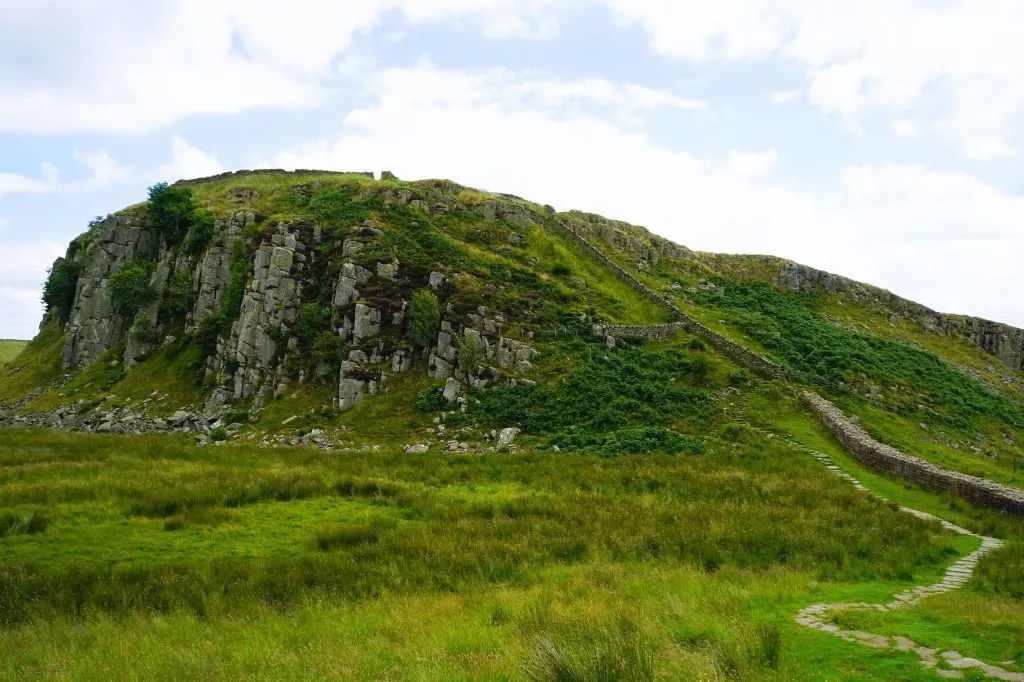
Gorham’s Cave Complex
Located on the eastern side of the Rock of Gibraltar, the precipitous limestone cliffs contain four caves collectively know as the Gorham’s Cave Complex with comprehensive archaeological deposits that present proof of Neanderthal occupation in the area over a timespan of more than 100,000 years.
These caves have produced far-reaching unique data about the exploitation of birds and marine animals by Neanderthal for food; and speak to the use of bird feathers and abstract rock engravings, both of which were previously unknown activities. Thus the Gorham’s Cave Complex has provided supplementary evidence of the cognitive capabilities of the Neanderthals.
The caves are made more interesting due to their abrupt limestone cliff environments, and the modern flora and fauna of Gibraltar. While an ongoing scientific investigation is advancing, these cave sites have added considerably to the Neanderthal and human evolution discussions, much like the sites of Human Evolution at Mount Carmel in Isreal and Archaeological Heritage of the Lenggong Valley in Malaysia. The striking cluster of caves also gives insight into the natural resources and environmental context of Neanderthal life.
While adjacent to Spain, Gibraltar remains a territory of the United Kingdom of Great Britain, and Northern Ireland and the Gorham’s Cave Complex are best explored while visit here or a nearby area of Spain. Expanses of the sea cave complex can be toured though the number of visitors allowed varies. A standard tour is around five people and takes you right to the entrance of the Gorham’s Cave Complex.
However, tourists are not permitted inside to ensure the fragile archaeological deposits remain undisturbed for further study.
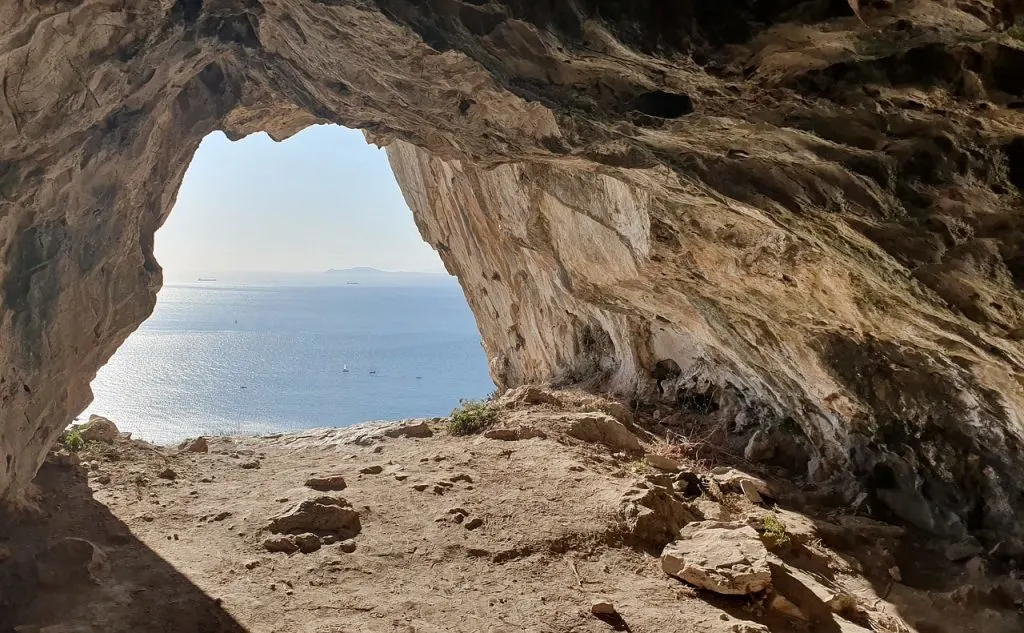
Heart of Neolithic Orkney
The Orkney Islands are located in the far north of Scotland, 16km offshore from John O’Groats. These islands are reached by ferry from either Gills Bay or Scrabster, which are small ports close to Thurso. You can also fly to Kirkwall, the capital of the islands, and hire a car to explore.
Orkney is inscribed by UNESCO for its Neolithic Archaeology, which is scattered across the islands. Four main sites have been identified as being of importance as they demonstrate how the Neolithic inhabitants of the islands lived. Between 3000BC and 2000BC, Orkney was a thriving area and was leading the way in the development of architecture and monuments.
Maes Howe is a large burial mound that aligns perfectly with the rising sun on the winter solstice, something that doesn’t happen by chance. Within sight of Maes Howe are the Standing Stones of Stenness and the Ring of Brodgar. These two structures are clearly ceremonial, but their reasons and uses are still not understood. Between the two sites is the Ness of Brodgar, one of the largest and longest-running archaeological digs in Europe. Each summer, it is uncovered, and it is slowly starting to allow archaeologists to work out how the stone circles and standing stones fit into the landscape of the time.
As well as the standing stones is Skara Brae. This is somewhere that makes you realize how special this landscape is. On a sandy beach with rolling sand dunes, an almost intact Neolithic village was uncovered after a storm. Today you can stand on the shoreline with the Atlantic waves crashing in a while looking at a home with cupboards, beds, and a hearth once used by someone 5000 years ago. A truly unique experience (and one of the few places in Scotland that have not yet featured in a major film and lost a bit of their magic…)
Explored by Suzanne from Meandering Wild
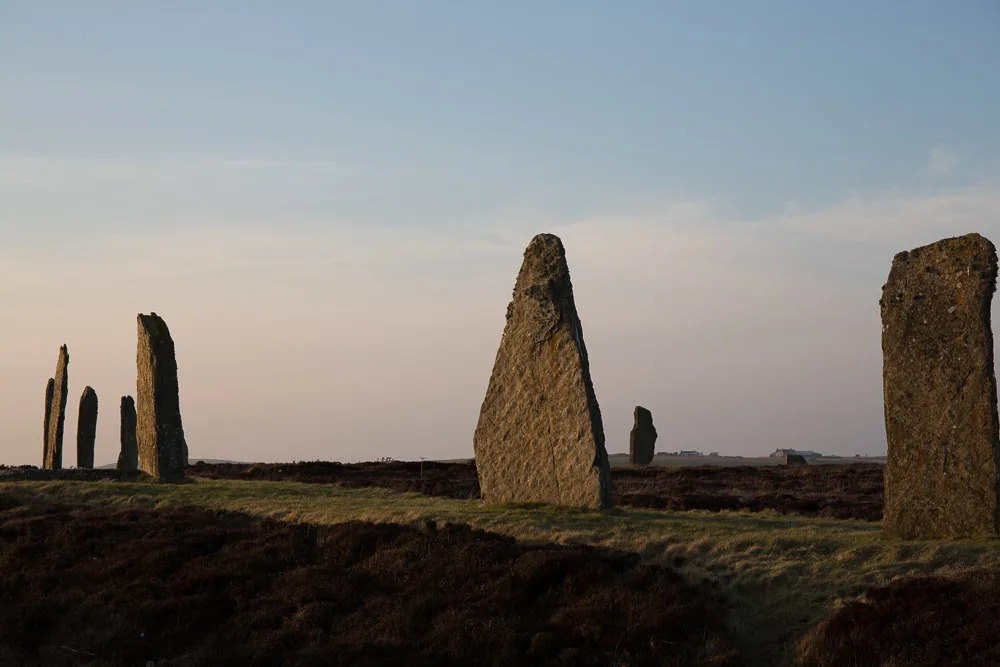
Historic Town of St George and Related Fortifications, Bermuda
The Historic Town of St George, with its related fortifications in the British island territory of Bermuda, is listed by UNESCO as an exceptional illustration of a fortified colonial town that has been continuously occupied since the early 17th century.
It is also the oldest English town in the New World, and St. George has survived an authentic example of the English colonial town in the New World. Its collective fortifications also vividly demonstrate the evolution of English military engineering over three centuries. In particular, how existing fortifications here were radically rebuilt after the American Revolution when Britain selected St George’s Island as its main New World naval base. Or how they were adapted to the emergence of artillery in the 1850s.
Some of the St George fortifications are unparalleled as the only enduring examples of the first defensive works produced by pioneering European colonists. Simultaneously, the connected forts found here depict the continuity of British coastal fortifications development in the New World.
The settlement of St George started in 1612, and the historic layout of the settlement has developed organically across nearly four centuries. At its center is King’s Square (or Market Square), facing the harbor. Off this square is two main east-west roads that connect the rest of Bermuda back to the quays and main street.
The white-washed soft limestone architecture present is unique in Bermuda and has altered little since the end of the 17th century. St George is distinct in that it has sustained independent houses that are commonly one story in height and rarely exceed two. This style was typical of the English settlements in North America but not seen in other European-founded cities of the New World.
Today St George is one of the only founding centers of a colony that has persisted yet remained small. Roughly 65% of the buildings in the St George date from before 1900, and of these, 40% were constructed before 1800. Consequently, the city remains a magical place to visit and is well worth the time and expense to get here.

Ironbridge Gorge
The Ironbridge Gorge UNESCO World Heritage site comprises 550 hectares in Telford, Shropshire – roughly 50 km northwest of Birmingham. Ironbridge Gorge was a core location for the 18th century Industrial Revolution and from its inception here, the revolution spread around the globe. As a result, it can be said this site is responsible for some of the most far-reaching advances in human history.
The Ironbridge Gorge site includes a five-kilometer length of the steep-sided, mineral-rich Severn Valley from Ironbridge downstream to Coalport, concurrently with two smaller river valleys. The Ironbridge Gorge produced the raw substances that transformed industrial methods and grants compelling insight into the roots of the Industrial Revolution. It also protects extensive testimony and remains from this time when the gorge area was the center of global attention not only from engineers but also from artists and writers.
The Ironbridge Gorge property compromises tangible remains of pit mounds, mines, spoil heaps, foundries, workshops, warehouses, factories, ironmasters’ and workers’ housing, public buildings, transport systems, and other infrastructure from the early industrial revolution – collectively with the classical landscape and forests of the area. These relics, along with an inclusive assortment of artifacts and archives, resulted in the inclusion of the Ironbridge Gorge as world heritage in the United Kingdom.
Today, adventurous travelers who make their way here will discover a living, functioning community of around 4000 people who continue to survive in the historic space. The world-famous landscape that is explained and made available by several institutions operating here. A must-visit is the Ironbridge Gorge Museum Trust, organized in 1967 to defend and represent the remains of the Industrial Revolution within the area and the Severn Gorge Countryside Trust, which in 1991 sought to maintain the woodland, grassland and associated historic structures of the area.
While you can spend days exploring the area, some important sites in the property shouldn’t be missed, including Coalbrookdale, wherein 1709 the production technique of smelting iron with coke was developed, which started the tremendous 18th-century iron revolution. In Ironbridge, there still stands the remains of two 18th century blast furnaces, while in Hay Brook Valley, there is a large open-air museum which consolidates the remains of the former Blists Hill blast furnaces and Blists Hill brick and tile works.
Finally, don’t miss the magnificent Hay Inclined Plane, which united the Shropshire Canal with the Coalport Canal.
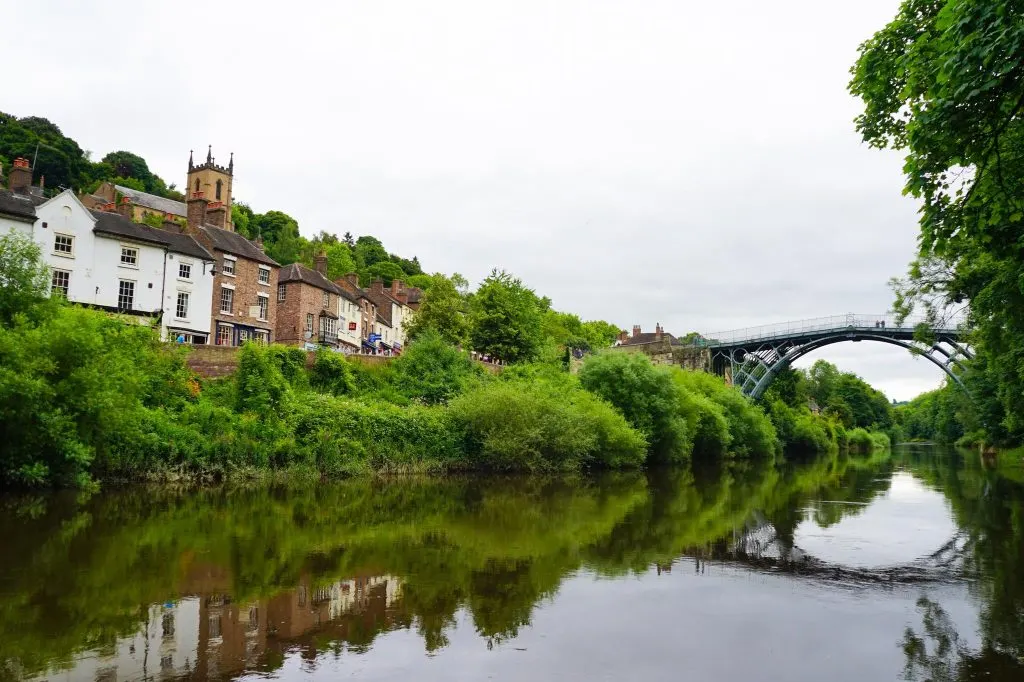
Jodrell Bank Observatory
The Jodrell Bank Observatory near Manchester was inscribed world heritage in 2019 in recognition of its role in the pioneering phase and later progression of radio astronomy.
The site exhibits numerous scientific and technical accomplishments associated with the evolution of a uniquely new field of scientific inquiry. The work undertaken at Jodrell Bank Observatory resulted in a radical new understanding of the nature and order of the Universe. There is visible confirmation here of every step in the annals of radio astronomy, from its appearance as a new science to its continued growth in the contemporary era.
Jodrell Bank Observatory is positioned in a rural area in northwest England and is part of the Jodrell Bank Centre for Astrophysics at the University of Manchester. Formerly, the scientific enterprise was stationed at the southern end of the site, but over time various new projects were undertaken, moving north. Thus the site has an evident progression of instruments that were revealed and then abandoned, with the relics of these early scientific apparatuses still surviving.
One of the most historically important instruments here is the Mark II Telescope, which today is surrounded by a collection of simple research structures in which much of the Observatory’s initial work was undertaken. In the north is the dominating 76-meter diameter Lovell Telescope, which has visitor facilities set around it, allowing members of the public to understand the impressive work undertaken here – and where further research might lead us in the future.
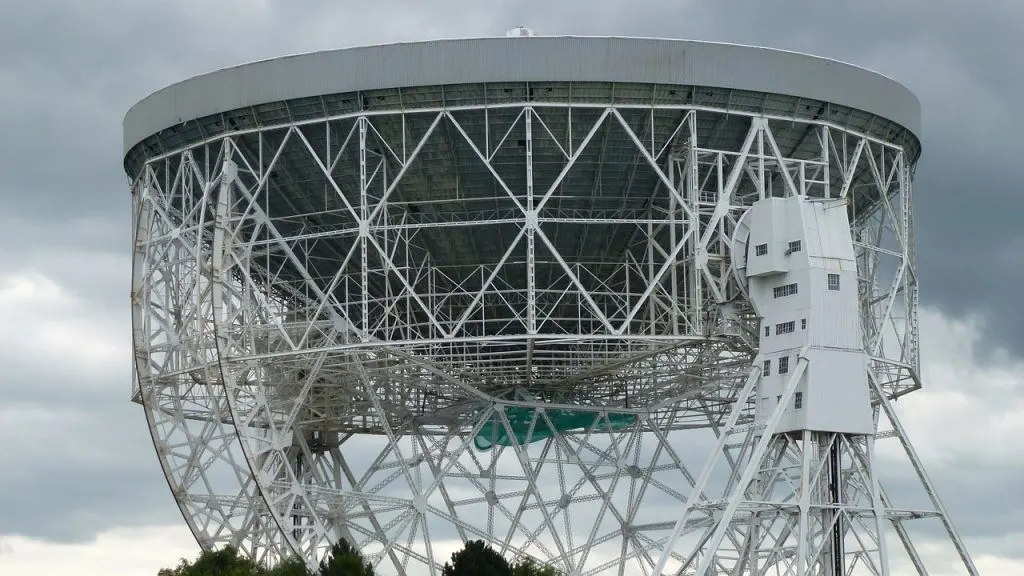
Liverpool – Maritime Mercantile City
The Liverpool Maritime Mercantile City world heritage site includes six locations in the city center of Liverpool, including the Pier Head, Albert Dock and William Brown Street, and several of the city’s most famous landmarks. It was listed by UNESCO in 2004 and is currently (and controversially) listed as threatened due to the intended construction of Liverpool Waters project.
Positioned where the River Mersey meets the Irish Sea, the maritime mercantile City of Liverpool played a crucial role in the British Empire’s development and prosperity. Liverpool grew through trade and became one of the main ports for the mass movement of people in the world, specifically slaves and emigrants from across northern Europe moving to America. Liverpool was a pioneer in advancing modern dock technology, port management, conveyor systems, and building construction.
A significant number of meaningful commercial, civic and public buildings, including St George’s Plateau, was elected to testify to the expansion of Liverpool into one of the world’s major trading centers in the 18th, 19th, and early 20th centuries. These areas include principal waterfront buildings, warehouses, dock walls, remnant canal systems, and mercantile areas, including shipping and marine insurance offices, which all exhibit the role of Liverpool as the most exceptional example of a commercial port at the height of Britain’s greatest global influence.
There are a great many ways to explore such an extensive sight. Still, you should not miss the Merseyside Maritime Museum or the Liverpool Museum if you want to explore Liverpool’s fascinating, diverse history truly.
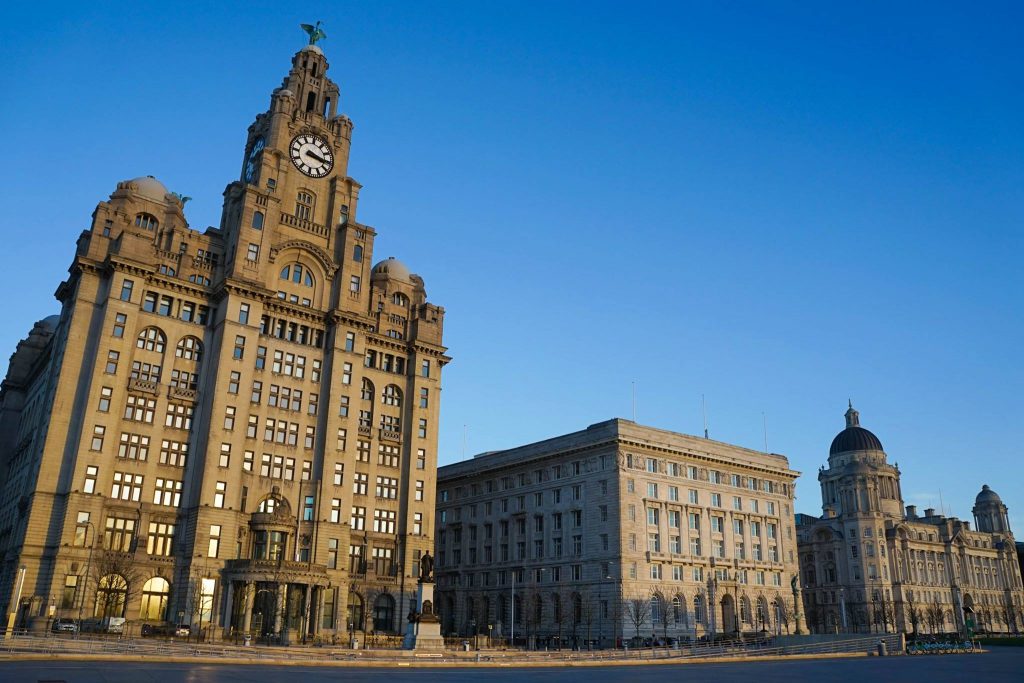
Maritime Greenwich
One of the 4 UNESCO World Heritage Sites in London, the Maritime Greenwich ensemble is ordered along the River Thames and benefited from over two centuries of royal patronage.
The site compromises the Royal Park at Greenwich includes the palatial Baroque complex of the Royal Hospital for Seamen, the 17th century Queen’s House (part of the last Royal Palace at Greenwich), and the Royal Observatory. Together these sites typify English creative, aesthetic, and scientific efforts in the 17th and 18th centuries contributed to the development of global navigation and speak more generally European architecture at an essential stage in its evolution.
The Royal Observatory Greenwich, established in 1675, performed a vital role in the annals of astronomy and navigation. However, it is perhaps most remembered because the prime meridian passes through it and gives its name to Greenwich Mean Time.
Inigo Jones’ Queen’s House was the first Palladian structure in Britain. It provided literal inspiration for classical houses and villas across the UK in the two centuries after it was created. The Royal Hospital, laid out according to a master plan developed by Christopher Wren in the late 17th century, is amidst the most distinguished Baroque buildings in the country and is one of the most famous landmarks in the UK.
The Royal Park was set out in the 1660s by André Le Nôtre and is noted for its application of symmetrical landscape design to unconventional terrain. The entire site takes a day to explore and fully understand its nuances. If you are short on time, the National Maritime Museum in Greenwich is the place to go to understand not only the site but further stories of exploration that shaped the world.
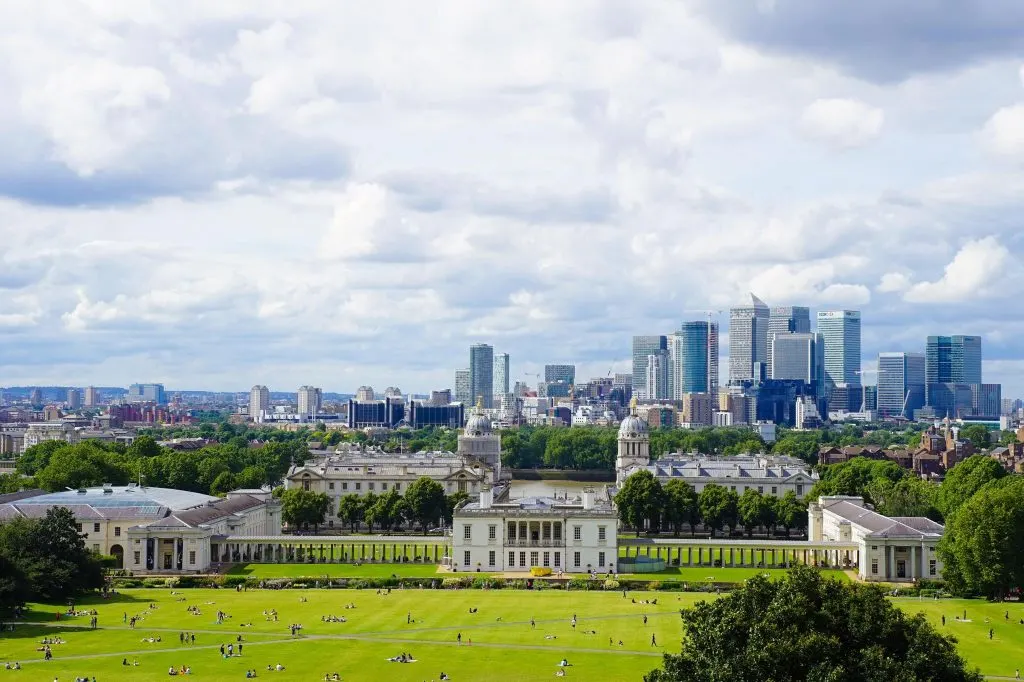
New Lanark
New Lanark is a settlement set in a picturesque Scottish landscape on the River Clyde, close to Glasgow. UNESCO inscribes new Lanark as an extraordinary example of a purpose-built mill village.
It was developed in the opening years of the 19th century when a visionary idealist Robert Owen (1771-1858) built a model industrial community based on textile production. Here Owen built upon the benevolent enterprises of his father-in-law, David Dale, and devised what he saw as a Utopian society that would be free from crime, poverty, and suffering. It was under Owen’s management lead by this enlightened revelation that New Lanark prospered.
Founded in 1785, the village and its water-wheel cotton mills operated until 1968 and, at its peak around the turn of the 19th century, constituted one of the greatest industrial groups in the world. The conception of the model industrial village at New Lanark, in which preparation and design were blended with a humanitarian interest in worker’s well-being, was a breakthrough in social and industrial history. It was a concept further borrowed and replicated around the world in various ways, including Finlayson in Tampere.
The ethical, charitable, and environmental values which drove Robert Owen’s vision at New Lanark presented the basis for structural material and intangible advancements that have had an enduring impact ever since. New Lanark today is an intriguing place to visit and serves as a reminder, or warning, that the creation of wealth does not imply the debasement of its producers. The vision here presented a constructive acknowledgment of the difficulties presented by industrial society at the time. It was the test-bed for doctrines and ideas that might improve the human condition.
New Lanark spurred other altruistic industrialists into action and created a journey that led to the founding of the garden city movement. The ideas embodied here that were once so radical and now almost universally accepted in our modern society. Something to keep in mind as you visit New Lanark and wander around its impressive mill buildings, roomy workers’ housing, and dignified schools.
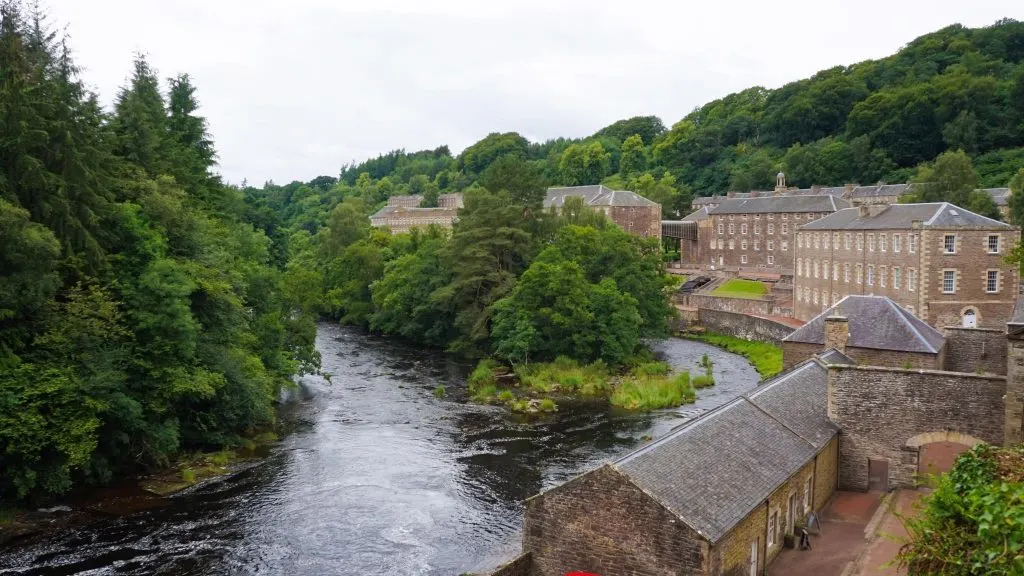 .
.
Old and New Towns of Edinburgh
Edinburgh, the majestic Scottish capital since the 15th century, is one of the most magical UNESCO world heritage sites in the United Kingdom. The extraordinary juxtaposition of two distinctly articulated urban planning phenomena: the Old Town, overlooked by an ancient fortress, and the neoclassical New Town, presents a simplicity of urban structure peerless in Europe.
This harmonious co-existence of these two areas in Edinburgh, both of exceptional historical and architectural interest, is recognized by UNESCO.
The organic Old Town hosts dramatic, robust, and distinctive tenement building, winding and little-altered medieval “fishbone” streets, hidden courts, restored mansion houses, and significant early public buildings such as the Canongate Tolbooth and St Giles Cathedral. In contrast, the planned Georgian New Town of Edinburgh, which was constructed between 1767 and 1890, is famed for its world-class, neo-classical fabricating, many associated with renowned architects alongside panoramic gardens.
Some of the most exquisite monuments of the New-classical revival in Europe persevere in Edinburg – both as a result of its status as the capital of Scotland and as its role as an influential center of thought and learning in the Age of Enlightenment.
Edinburgh’s charm is not exactly a secret, with tourists flocking here year-round – especially for Hogmanay. Even as tourism booms, however, the Old Town’s climactic topography merged with the planned alignments of the New Town, which results in magnificent views, iconic skylines, and a city that will undoubtedly steal your heart.
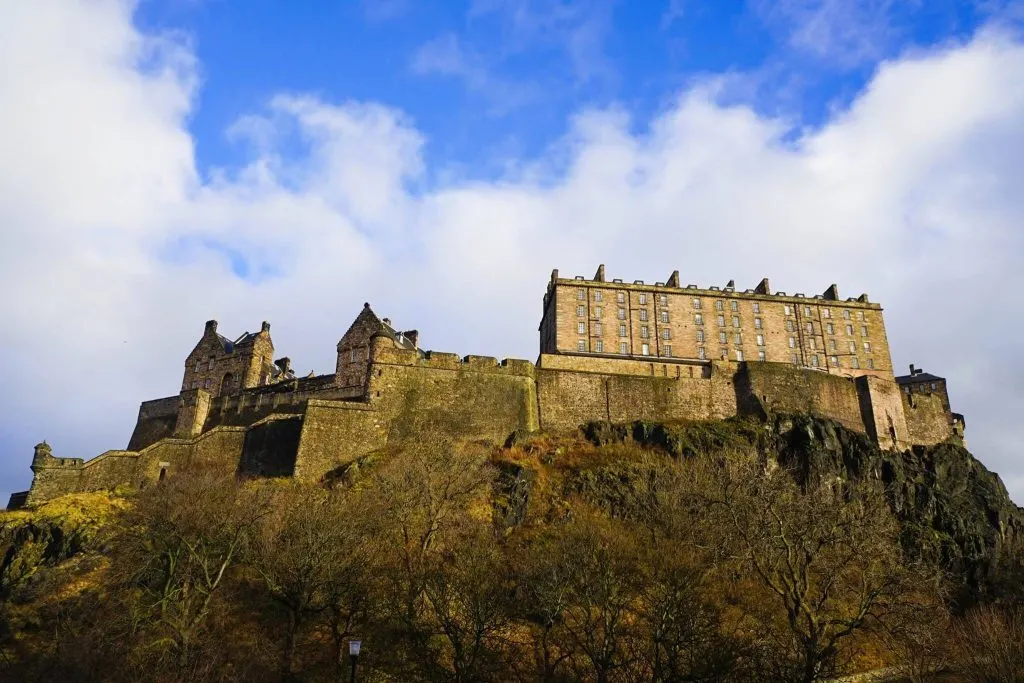
Palace of Westminster and Westminster Abbey including Saint Margaret’s Church
Another world heritage site in the United Kingdom that likely needs no introduction is the superb Palace of Westminster – home of the British Parliament and one of the most exceptional illustrations of Neo-Gothic architecture in the world.
Westminster Palace, restored from the year 1840 on the site of major medieval remains, sites next to the River Thames in the heart of London. The site, which contains the miniature medieval Church of Saint Margaret and Westminster Abbey, is of great historical, cultural, and metaphorical significance.
With their sophisticated silhouettes, these buildings have typified monarchy, devotion, and power since Edward the Confessor erected his palace and church in the 11th century AD on Thorney Island.
Evolving through the centuries, they collectively depict the United Kingdom’s journey from feudal culture to a contemporary democracy and testify to the intertwined of the church, monarchy, and state in that voyage. The Palace of Westminster, Westminster Abbey, and St Margaret’s Church persist in their original roles and perform a crucial function in the UK society and government.
Westminster Abbey remains the place where monarchs are crowned, married, and buried – and has been the location where all the sovereigns have been crowned since the 11th century. It has also evolved over time and now is a locus for national monuments of those who have served in the United Kingdoms’ journey, including pre-eminent individuals or representations, such as that of the tomb of the Unknown Warrior. Westminster Abbey continues its proud history of worship and is used daily, as it has been for over 1000 years, in addition to its role in many significant national celebrations.
The Palace of Westminster remains the seat of Parliament, since its re-founding by Queen Elizabeth I in 1560. Its origins, however, date back even further to the establishment of the Westminster School in 1178. The buildings are iconic, to say the least, and also the sound of ‘Big Ben’ is broadcast worldwide. The ensemble remains a fundamental part of the UK’s identity. They collectively testify to the history of one of the oldest parliamentary monarchies that continues into present times – and the growth of parliamentary and constitutional institutions.
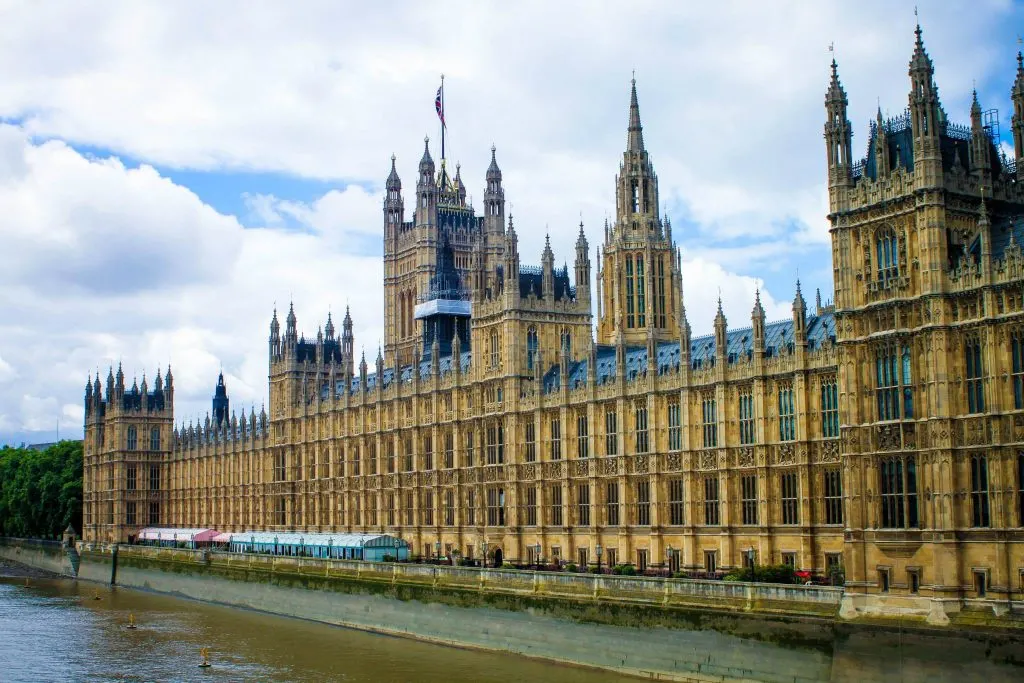
Pontcysyllte Aqueduct and Canal
Located in north-eastern Wales, the 18-kilometer long Pontcysyllte Aqueduct and Canal is an awe-inspiring achievement of the Industrial Revolution civil engineering Industrial Revolution.
Finished in 1805, it took ten years to design and build. It is particularly remarkable that it spanned a challenging geographical setting, a deep valley, so its construction necessitated extraordinary audacious civil engineering solutions. Even more incredible is that is it was produced without using locks. Thus the Pontcysyllte Aqueduct is a pioneering masterwork of stone and cast iron structure, and its 18-arched construction was not only light and robust but elegant.
UNESCO inscribes the site as a result of its creative genius and a tangible manifestation of the expertise acquired during the Industrial Revolution in Britain. While a visit here only requires an hour at max, there are several walks you can complete, both across the aqueduct or below it.
The perfect addition to any North Wales road trip – and a chance to marvel at an innovative construction that sparked and inspired other audacious projects around the world!
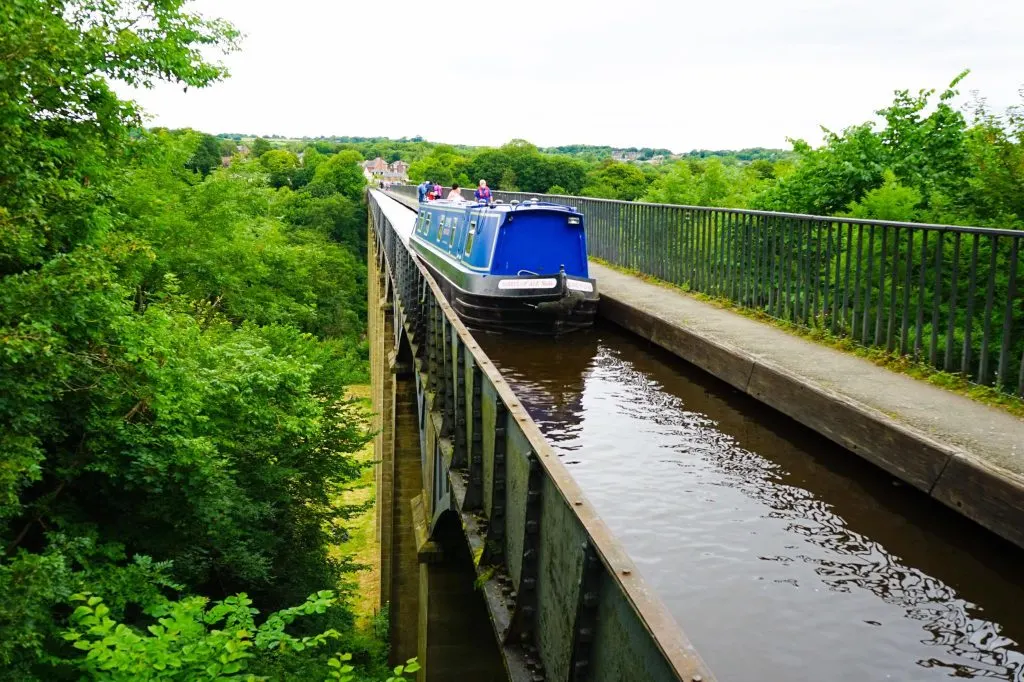
Royal Botanic Gardens, Kew
The Royal Botanic Gardens in Kew (a district in the London Borough of Richmond near the deer park) is a globally important botanical research and education institution with still today employs over 1,100 staff. It is also one of the most visited attractions in London and one of the United Kingdoms UNESCO World Heritage Sites.
Placed amongst a string of parks and estates adjacent to the Thames, this celebrated landscape garden comprises works by famed landscape architects Bridgeman, Kent, Chambers, Capability Brown, and Nesfield. It is considered an outstanding example of a landscape which illustrates a significant stage in human history, in this case, garden design from the 18th to the 20th centuries.
The Kew gardens hosts within a comprehensive botanic collection of conserved plants, living plants, and records that have been accumulated over centuries. Since its conception in 1759, the gardens have made a meaningful and continuous contribution to global knowledge of plant diversity, plant systematics, and economic botany.
The garden designs of Kew Botanic Gardens, along with their structures and considerable plant compilations, unite to form a unique ensemble that speaks to the growth in garden art and botanical science that consequently spread around the globe. This ubiquity of the 18th-century English landscape garden concept today, in Europe and beyond, is a testament to this – as is the presence of large iron framed glasshouses (such as those in Vienna and Gothenburg), which were all modeled on the Palm House and the Temperate House found here.
One of only three botanical gardens listed by UNESCO worldwide, including Padua in Italy and the Singapore Botanical Gardens, the Kew Gardens evolution from royal gardens to public botanic garden and then the modern 20th-century institution of conservation ecology is exceptionally fascinating and visually arresting.
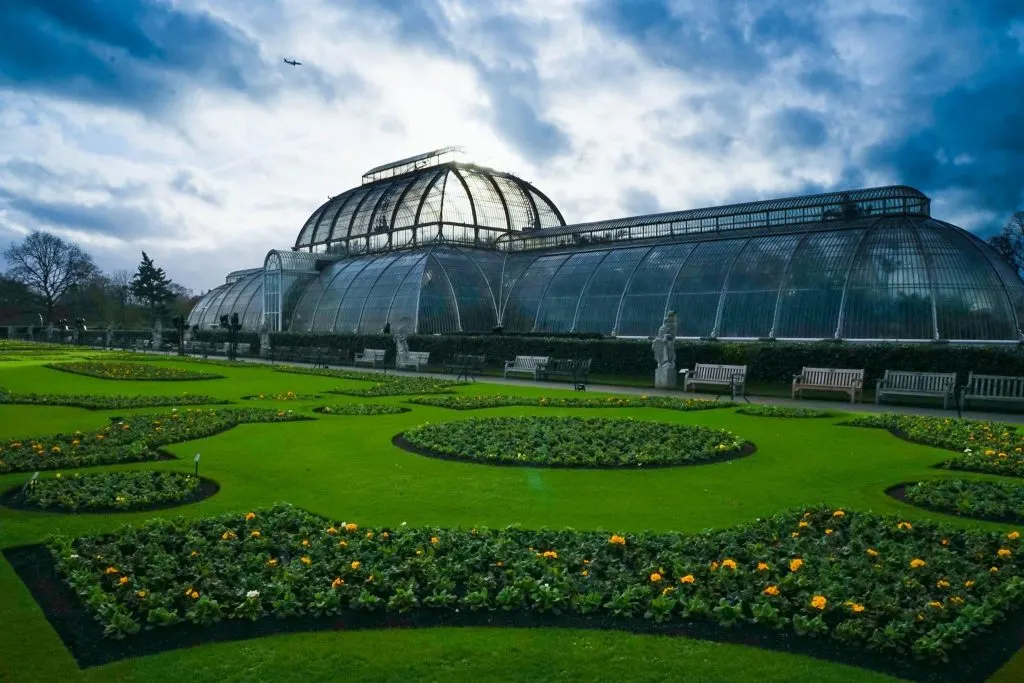
Saltaire
Saltaire is a fantastically-preserved Victorian industrial “model village” near Bradford, West Yorkshire, inscribed on the UNESCO World Heritage list for its completeness and the range of buildings you can see. The neat rows of near-identical workers’ cottages flow out from the village center and its reason for being – Sir Titus Salt’s enormous Salts Mill.
Titus Salt was a Bradford businessman who’d become increasingly dismayed at the pollution and poor working conditions in the city. He decided to combine his textile businesses on a single site, three miles outside the city.
When Salts Mill opened in 1853, it was the largest industrial building in the world, and it’s still a remarkable sight. The mill closed in the 1980s but was refurbished and is now home to an art gallery, cafes, and several great shops – including one of my absolute favorite bookshops in the UK.
Once the mill was complete, Titus Salt turned his attention to providing his workers with well-built and sanitary housing. All the houses in the village had water and a gas supply, and their own outside toilet. The streets and houses were designed to provide good ventilation. Other facilities in Saltaire included shops, a hospital, almshouses, bathhouses, and a hall for village functions. There were two churches (Titus Salt is buried in one) and an elegantly laid out for outdoor recreation. The only facility missing was a pub – “beerhouses” were expressly forbidden, although that’s been put right now!
Getting to Saltaire and Salts Mill is really easy. It’s only 12 miles west of Leeds and four miles north of Bradford, and there’s a train station next to Salts Mill with frequent services to both cities and from Skipton.
Explored by Helen from Helen on her Holidays

Stonehenge, Avebury, and Associated Sites
The UNESCO World Heritage Site “Stonehenge, Avebury and Associated Sites” is one of the most popular to visit in the United Kingdom since Stonehenge is one of the most popular tourist sites anywhere in the world.
Located on the Salisbury Plain, Stonehenge is two hours from London by car and one hour from Reading. Many people choose to come on a guided day tour that also includes the site of Bath, but you can visit Stonehenge on your own without a tour. If you do not have access to a car, there is a train that takes about ninety minutes that leaves Waterloo Station throughout the day.
Stonehenge is a megalithic site. While its original usage is still up for debate, we do know that it was used for some mortuary and spiritual purposes, and it is built so that it aligns with the summer and winter solstices. Because of this, Stonehenge is a popular place to celebrate Summer Solstice, especially by local residents who practice nature-based religions.
The Winter Solstice is also popular, though the crowds will be much smaller due to the weather. Don’t miss a trip to the gift shop on your way out as there are some truly wild Stonehenge-themed souvenirs.
Explored by Stephanie Craig from History Fangirl
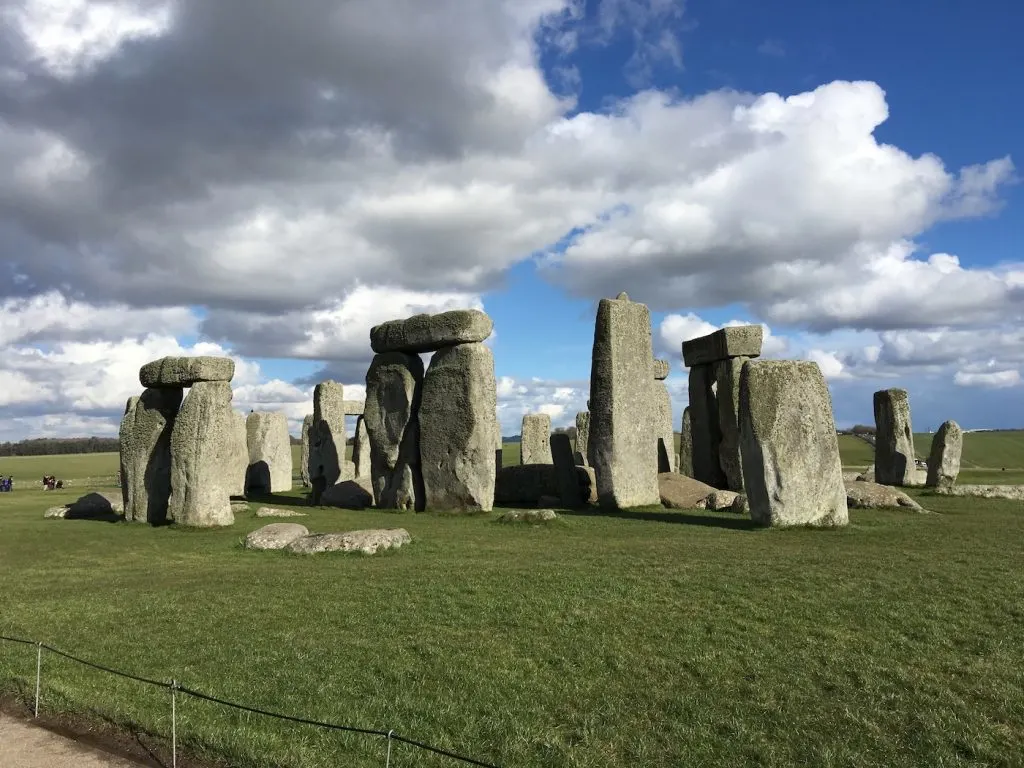
Studley Royal Park including the Ruins of Fountains Abbey
Fountains Abbey and Studley Royal Gardens are the only abbey ruins in the United Kingdom to be named a UNESCO site. The fact that the Abbey ruins have been incorporated with the Studley Gardens makes it unique.
The Abbey was founded in 1132 and operated for 407 years! It was one of the wealthiest monasteries in England until Henry VIII ordered its dissolution in 1539. In 1761, the owners of Studley Gardens next door purchased Fountains Abbey, making the two sites one.
There is so much to see at Fountains Abbey, that it’s not possible to see it all in one visit. Of course, you must explore the huge Fountains Abbey ruins, but there is also the Fountains Mill, Fountains Hall, Studley Royal Gardens, Studley Deer Park, and St. Mary’s Church. The grounds were much bigger than I expected.
It’s a place that is filled with both history and beauty, a photographer’s dream. My favorite spot was the Moon Pond inside Studley Royal. The grass around the pond is a lush green and perfectly manicured. The water adds to the serenity. The sculptures add a distinctly Italian flavor, and the columns on the Temple of Piety remind me of ancient Greece.
Fountains Abbey and Studley Royal are located in the England countryside near the city of Ripon. Public transportation options are limited, so it is best to drive. Tickets to visit Fountains Abbey and Studley Royal cost £13for adults and £6.50 for children. There is also a family ticket for £32.50 National Trust and English Heritage members can visit for free. The Studley Deer Park and St. Mary’s Church are free for all to visit.
Explored by Anisa from Two Traveling Texans
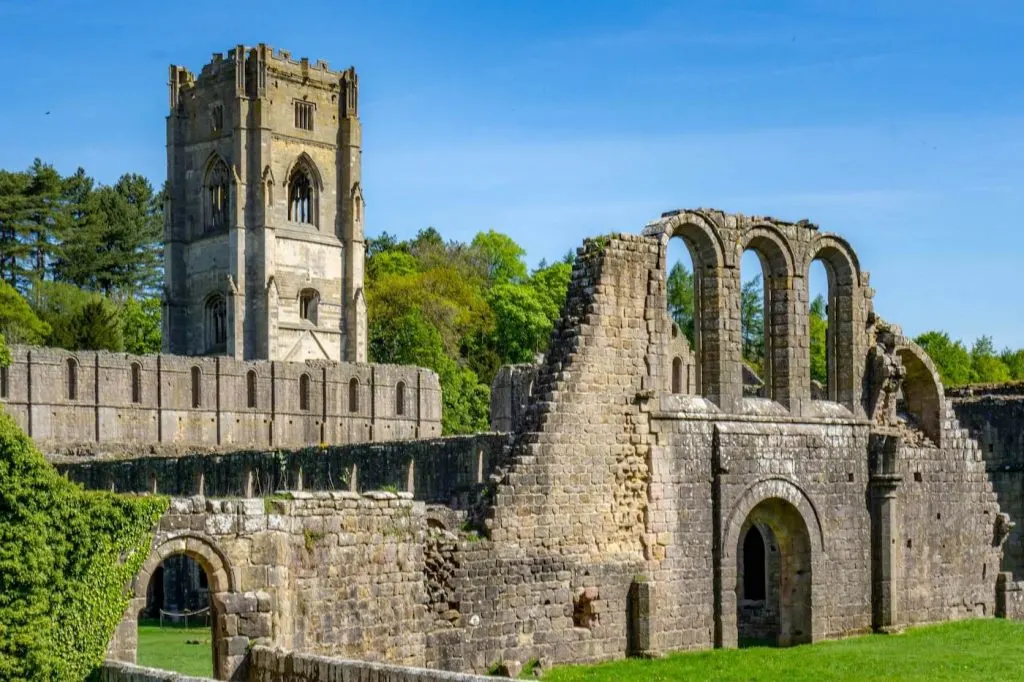
The English Lake District
The Lake District is a place of exquisite beauty in Cumbria. It’s unique vistas cover 2.362 square kilometers and is inscribed by Unesco as a cultural landscape. The area also has strong connections with literature, with authors such as Beatrix Potter and William Wordsworth spending much of their life living there.
It is thanks to Beatrix Potter that the rolling fells and surrounding farms were protected. She left her estate of 14 farms, 4000 acres of land, and her flocks of Herdwick Sheep to the National Trust. All of which she bought during her life to protect the countryside from industrial development. Exploring the walking trails and admiring the breathtaking views around the various lakes is why thousands of tourists and I regularly visit the area. That said, there’s always the opportunity to find a secluded spot even in the peak summer season.
If you’re looking for a hidden gem and don’t mind small steep roads, the “surprise view” near Keswick is worth seeking out. To get there, take the B5289 towards Borrowdale and fork left towards Ashness Bridge. Few visitors make it up here, but the breathtaking view across Derwent water is a personal favorite. In addition to the numerous trails, there’s also a wealth of historic buildings, quaint villages, and plenty of art galleries to visit.
The homes of Beatrix Potter and William Wordsworth are popular attractions, and the small town of Grasmere makes for an excellent place to stay. It’s a central town and within a 30-minute drive of Windermere to the south and Keswick to the north. Grasmere also has some excellent restaurants, including the Michelin starred Forrest Side hotel for those who enjoy fine dining.
Whatever time of year you visit, there’s a good chance that it might rain. For that reason, ensure you pack an umbrella and appropriate clothes. The scenery never disappoints, and many would argue that the vistas look even better when the mist is lurking above the water.
Explored by Fiona from Passport and Piano
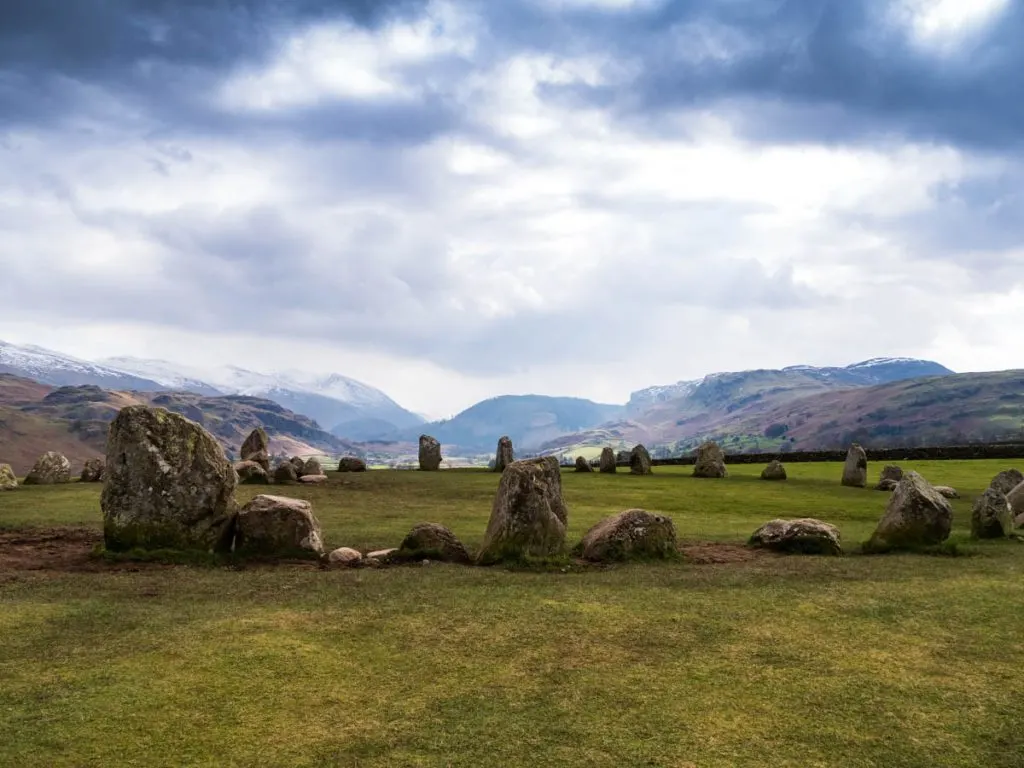
The Forth Bridge
The Forth Bridge is an iconic world heritage site in Scotland which traverses the River Forth’s estuary (Firth). It links Fife to Edinburgh by railway and when it opened in 1890 was one of the world’s earliest (and most significant) multi-span cantilever bridge.
At 2,529 meters, the Forth Bridge continues to be one of the world’s longest bridges and remains an important passenger and freight rail bridge, although vehicles now cross a new bridge nearby.
With its emblematic industrial aesthetic and memorable red color, this colossal structure was conceptualized using advanced civil engineering design ideas and modern construction methods. It is difficult to overestimate just how exceptional and groundbreaking its construction was. The Forth Bridge was innovative not only in design but in materials used and the scale proposed. UNESCO’s inscription is a testament to this unusual and extraordinary milestone in bridge design construction – along with recognization the role railways grew to play in long-distance land travel of the era.
This Forth Bridge took a novel approach to design in that its design is ‘naked, a forthright, unadorned appearance that proudly showcases its structural elements. The use of mild steel at the time was relatively new, and so the design of the bridge was explicitly intended to bolster its reputation of the material. The superstructure compromises three double-cantilever towers arising 110 m above their granite pier foundations. Then cantilever arms reach out 207 m from the towers and are connected by two 107m suspended spans.
The result is five 521-m bridges formed by the three towers, which were each individually tied for the five longest bridges in the world. For 28 years after its construction! Even today, over 100 years later, the Forth Bridge collectively form the longest multi-span cantilever bridge in the world.
The Forth Bridge is the zenith of its construction typology, scantily repeated since but universally lauded as an engineering wonder of the world. There are many ways to admire its beauty, from exploring by car or taking a day trip to St. Andrews by train from Edinburgh, which crossed this magnificent bridge.
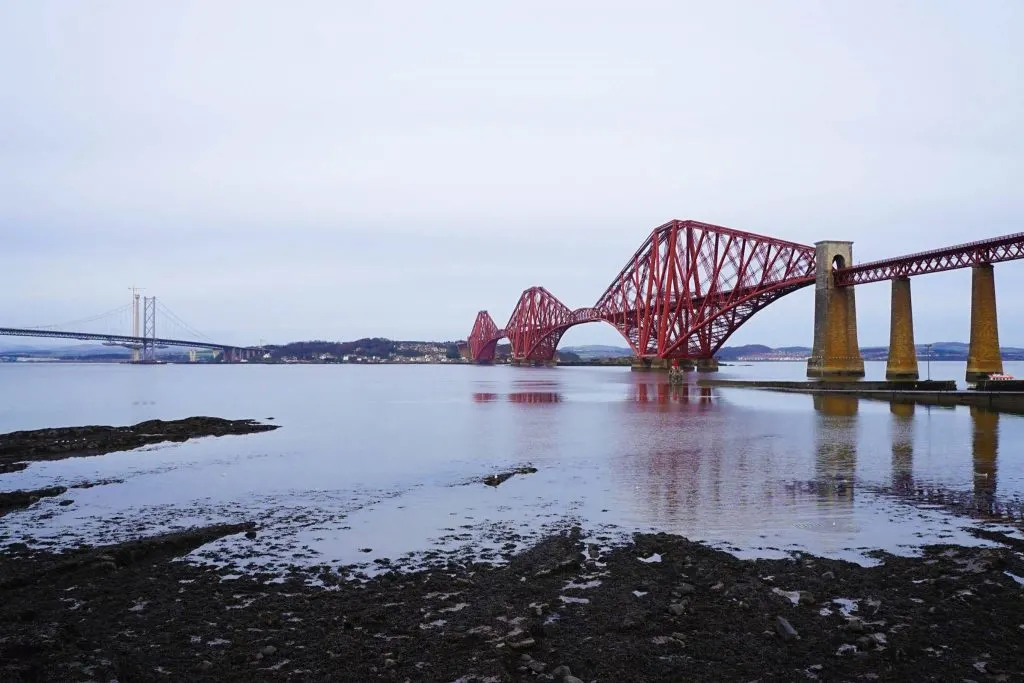
Tower of London
The Tower of London UNESCO World Heritage Site (formally known as the Her Majesty’s Royal Palace and Fortress of the Tower of London), is a well-known castle positioned on the north bank of the River Thames in central London. Already one of the most unique things to explore in London, the Tower of London is considered by UNESCO to possess outstanding universal value and has been protected as such since 1988.
The Tower of London is a globally famous masterpiece and one of the United Kingdoms’ most enduring structures. William the Conqueror constructed the White Tower almost a thousand years ago in 1066 as a display of Norman power.
This is particularly reflected in its strategic position on the River Thames as it starred as both fortress and gateway at the entrance to the capital. The Tower of London is the most exhaustive model of an 11th-century European fortress-palace that exists today. Its unique survival and continuous development for over five centuries ensured the Tower of London become a symbol of royalty – and remains as such today, long after its proper use as ceased.
It also encouraged the evolution of various State institutions in England, consolidating essential roles such as the national defense, record-keeping, and coinage into one place. As if this was not enough, the Tower of London has been the backdrop for many historical events, including the execution of not one, but three English queens.
No visit to London or the United Kingdom would be complete without visiting here.

Natural UNESCO World Heritage Sites In United Kingdom
Dorset and East Devon Coast
The Dorset and East Devon Coast Jurassic Coast is a World Heritage Site located on the English Channel coast in the south of England. It encompasses eight largely undeveloped sites that extend from Exmouth in East Devon to Studland Bay in Dorset, a range of about 155 km. It was listed as UNESCO World Heritage in 2001.
The Dorset and East Devon Coast site has an exceptional blend of globally important geological and geomorphological peculiarities. The property’s geology records roughly 185 million years of the Earth’s history, including some globally significant fossil sites giving rise to its colloquial name – the Jurassic Coast.
The sections in Dorset and East Devon also includes a range of prominent cases of coastal geomorphological hallmarks, landforms, and processes. It is famed for its enrichment of humanity’s understanding of earth science and has been studied for over 300 years.
The Jurassic Coast is responsible for many aspects of our knowledge of geology, paleontology, and geomorphology – and anyone who has studied geography at some point will be familiar with many of the highlights here. Geologists, geomorphologists, and geographies recognize the coast as one of the most vital teaching and research sites in the world – a tradition that continues to this day. Many of its sites can be explored on a Jurassic Coast road trip, either in one day or over a multi-day period.
Historical, beautiful, and incredibly exciting, the Dorset and East Devon coastline is one of the must-visit UNESCO World Heritage Sites of the United Kingdom.
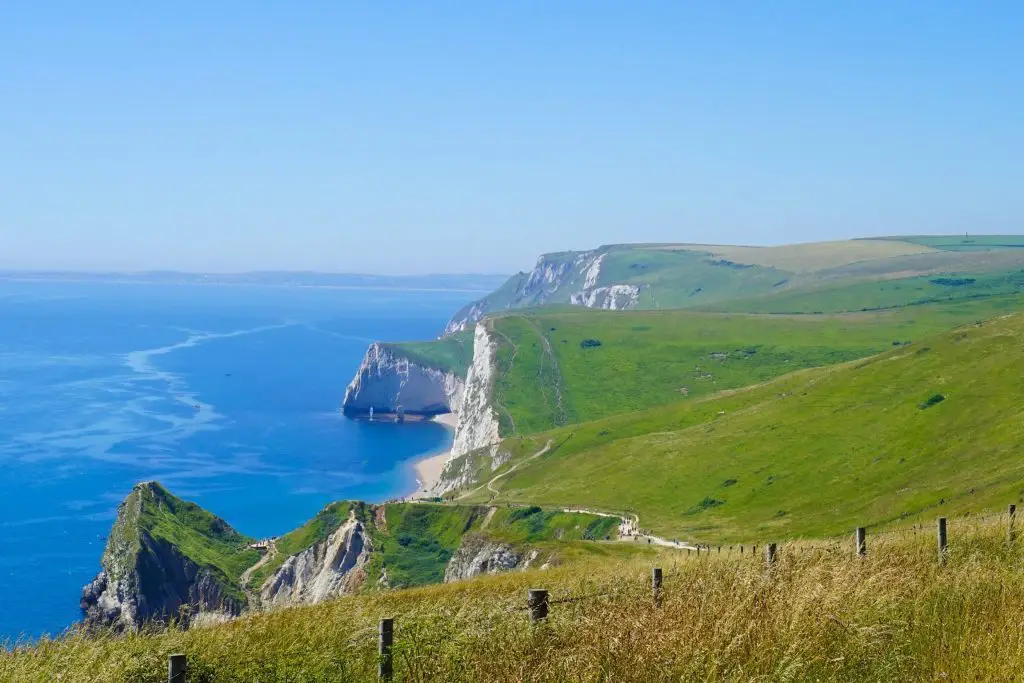
Giant’s Causeway and Causeway Coast
The Giant’s Causeway and Causeway Coast’ Heritage Site is a famous coastline of scenic and historical tourist attractions along the Antrim Coast of Northern Ireland.
Designated as a UNESCO World Heritage Site, the more famous Giant’s Causeway, known for its unique interlocking basalt columns, was expanded to include roughly 29km of coastline to make up the Causeway Coast Area which is designated as well as an Area of Outstanding Natural Beauty (AONB). And a good base/start for exploring the region would be the coastal town of Ballycastle, which is roughly 1-hour from the capital of Belfast City center (55 miles).
The main attraction on the coastline would still be the Giant’s Causeway, run by the National Trust, which alone was designated over 30-years when the UK first joined the UNESCO scheme (1986). But there has been a huge surge in popularity for many other sites due to regular features in the Game of Thrones franchise where settings and backdrops include The Dark Hedges (Kingsroad), the old ruins of Dunluce Castle, and Ballintoy Harbour (the Iron Isles), among many others. And regular niche bus tours would cover these niche attractions alone.
Otherwise, the entire area looks like something from a fantasy feature with rugged coastlines, cragged castles, and wild rural scenes in between. Some of the more memorable attractions include the Carrick-a-Rede Rope bridge, Mussenden Temple, and many beaches, including the drive-on beach at Portstewart Strand. For whiskey-lovers, there is also the old Bushmills Distillery, which is home to Northern Ireland’s revered Irish Whisky, and it is also a great half-way point to base a stay along the way.
Explored by Allan from It’s Sometimes Sunny in Bangor

Gough and Inaccessible Islands
The Gough and Inaccessible Islands UNESCO World Heritage Sites, established far from England in the deep south Atlantic, are some of the least-disrupted islands and marine ecosystems remaining in a cold temperate climate zone.
The magnificent cliffs of Gough and Inaccessible Islands, mounting above the wild ocean, remain free from the plague of introduced mammals many comparable islands around the world endure. As a result, they provide a haven for the world’s largest colonies of sea birds, which can still breed and thrive without the threat of predation.
Gough Island even has two endemic varieties of land birds, the gallinule and the Gough rowettie, in addition to twelve plant species seen nowhere else. Inaccessible Island claims two birds, eight plants, and ten invertebrates species (that we know of) as endemic. This undisturbed landscape and high rates of endemism ensure the special conservation significance of the site and are why it is protected as UNESCO World Heritage.
The sites are unsettled apart from a weather station, which is crewed by South African on landed leased for this purpose. If you want to visit Gough and Inaccessible Islands, things get even more little confusing. Officially part of Tristan da Cunha, the most remote inhabited archipelago in the world. It is a territory of the United Kingdom and administered formally by St Helena, which is over 2,000 km away.
In practice, Tristan da Cunha is self-governing, but there are only around 250 residents and no airstrip. You’ll need to come by boat from South Africa to get here or take an expedition cruise to Ushuaia in Argentina (that ends in St Helena). Is the effort worth it, given that you are often not permitted to step foot on these islands, and if you did – there are tall cliffs and no paths? I’ll leave that up to you to decide.
Henderson Island
Henderson Island, an isolated island in the eastern South Pacific, is closer to the UNESCO World heritage sites of New Zealand and Australia. However, unlike these countries, which are now (more or less) independent, Henderson Island remains a British Overseas Territory. Along with the Pitcairn, Oeno and Ducie Islands, it forms the Pitcairn Island Group.
It was designated a World Heritage Site in 1988 as one of the few atolls in the world whose ecology has been virtually unscathed by human presence. Henderson Island’s isolated location affords it an exemplary setting for scrutinizing the dynamics of insular evolution and understanding how the natural selection process takes place. It is especially notable for the ten plants and four land birds that are endemic to the Island – an extraordinary diversity given Henderson island’s size.
Sadly because of the South Pacific Gyre, Henderson Island beaches reportedly have one of the highest density of plastic rubbish found anywhere in the world – highlighting the effect of our modern lifestyles on even the most remote corners of our planet. And why striving for waste-free travel is so important.
For those who hope to visit the Henderson Island UNESCO World Heritage site, you should know that aside from an infrequent visit from scientists and Pitcairn’s diminishing population, there are hardly any tourists. If you make it out to the Pitcairn Island, however, landings can be arranged – though it is far from cheap.
Mixed UNESCO World Heritage Sites In United Kingdom
St Kilda
The distant archipelago of St Kilda lies around 50 miles off the west coast of Scotland – in other words: in the middle of the Atlantic ocean.
St Kilda is a double World Heritage Site, fulfilling both cultural and natural criteria. Before the final inhabitants of St Kilda were evacuated in 1930, the islands were home to people living at the edge of Europe for thousands of years. Their legacy is well-preserved in different kinds of sites: from the hundreds of “cleiteans” (stone storages) littered across the slopes to the remains of a medieval village and abandoned houses near the bay. St Kilda’s main island, Hirta, is a fascinating historical site and a great place to learn more about life in remote archipelagos.
Just as breathtaking though, is the natural environment of St Kilda. Hirta features some of the tallest cliffs in the UK, and the sea stacks are also among the largest in the country. Millions of seabirds come here to raise their young, including the world’s second-largest gannet colony and Britain’s largest colony of puffins.
St Kilda is also home to several unique species of animals, including the Soay sheep and two endemic sub-species, the St Kilda Wren and St Kilda Fieldmouse. While there is no longer a permanent settlement on St Kilda (apart from a military base), researchers live on the islands throughout the summer to study this unique ecosystem.
Visiting St Kilda is expensive, but bucket-list worthy. The journey from the Isle of Harris takes just under 3 hours and can only be done if conditions are right – you are crossing open ocean after all. Boat trips are also available from the Isle of Skye (4 hours, one-way). Tours include a landing on Hirta and a cruise to some of the other islands and sea stacks of St Kilda.
Explored by Kathi from Watch Me See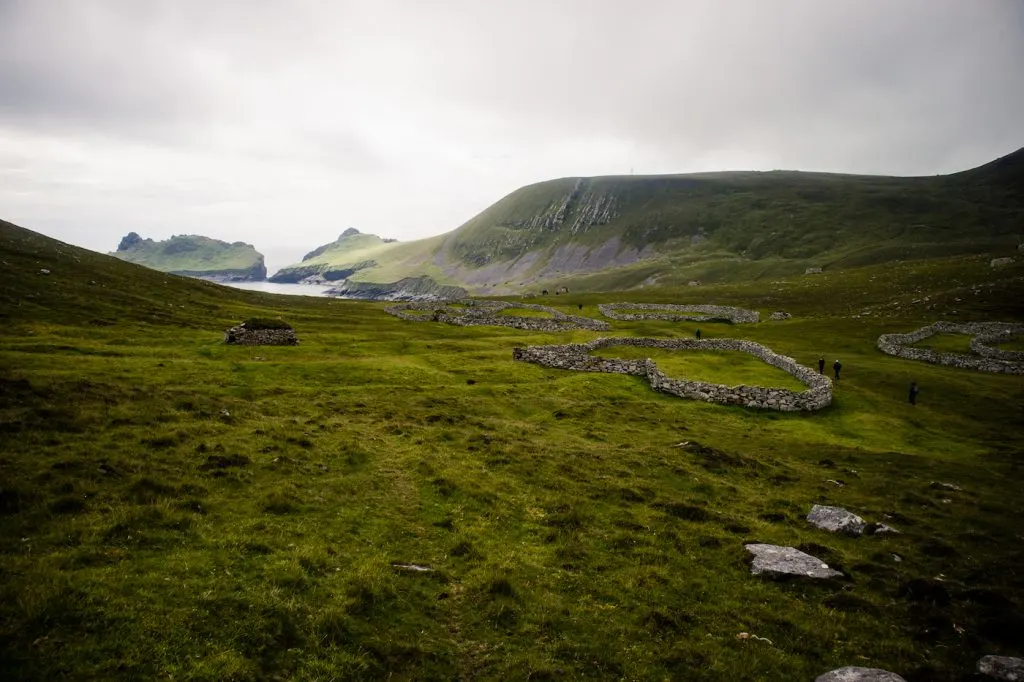
And there you have it—all of the world heritage sites in the United Kingdom. Hopefully, you have learned something about this country’s history already through these sites. Maybe some of them have even inspired your future travels. While overtourism is most certainly an issue, the United Kingdom of Great Britain and Northern Ireland has recognized this issue and is taking steps in the right direction.
If you get the opportunity to visit, please make choices that encourage the protection of these special places for future generations. This includes consideration of the transport you take in the United Kingdom, along with which United Kingdom / Europe tour companies you choose to support.
If you haven’t quite had enough, United Kingdom also has tentative UNESCO sites which it has proposed but has yet to be ratified. These may or may not be included at a future date but are very telling in that they are what each country considers to be it’s cultural and/or natural heritage of outstanding universal value.
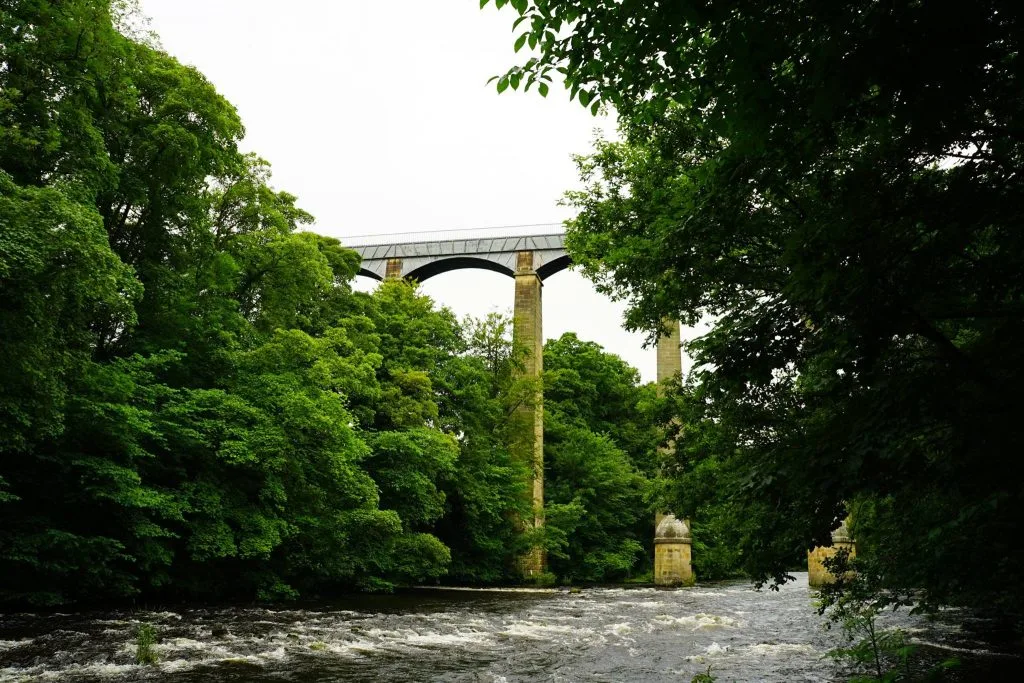
They typically are worthy candidates for inscriptions and should be of interest for adventurous travelers who want to explore under-the-radar spots before they become touristy. For the United Kingdom, these ten tentative sites are:
- Chatham Dockyard and its Defences
- Creswell Crags
- Darwin’s Landscape Laboratory
- Island of St Helena
- Mousa, Old Scatness and Jarlshof: the Zenith of Iron Age Shetland
- Slate Industry of North Wales
- Flow Country
- The Twin Monastery of Wearmouth Jarrow
- Turks and Caicos Islands
- Great Spas of Europe
Happy exploring!
